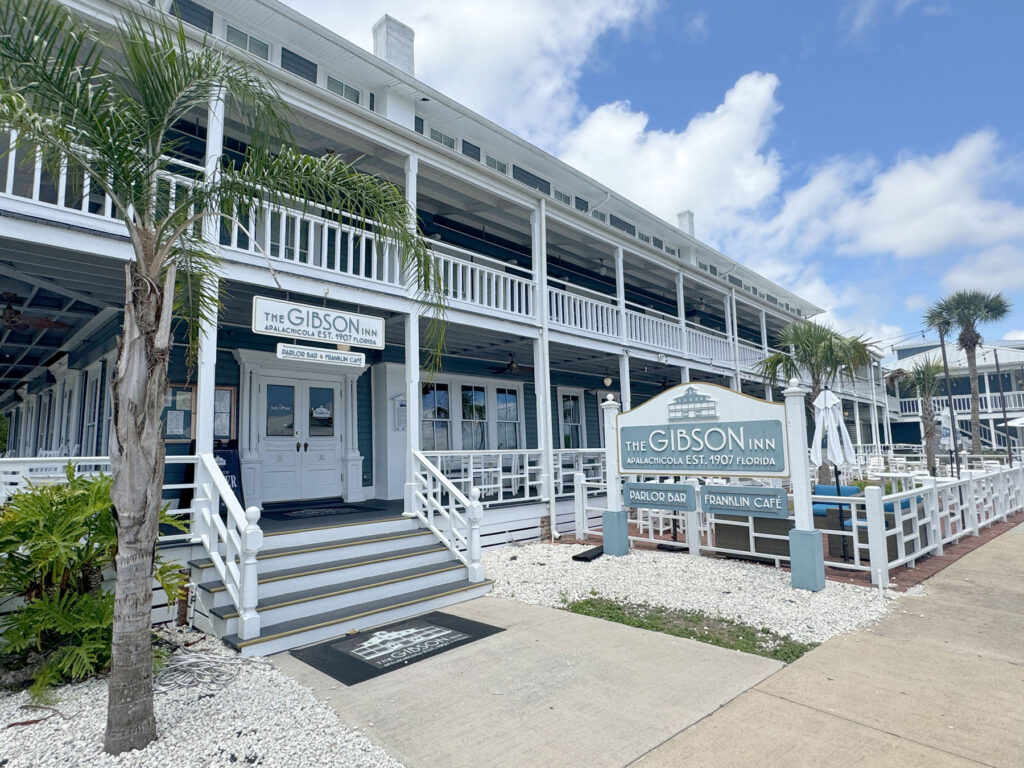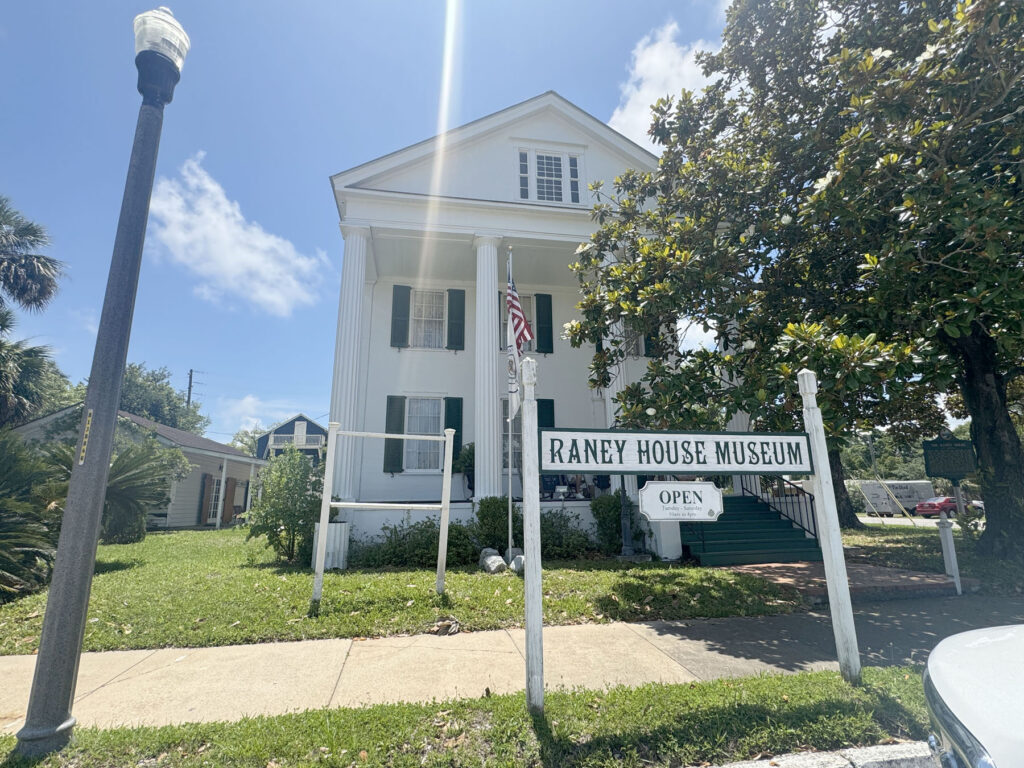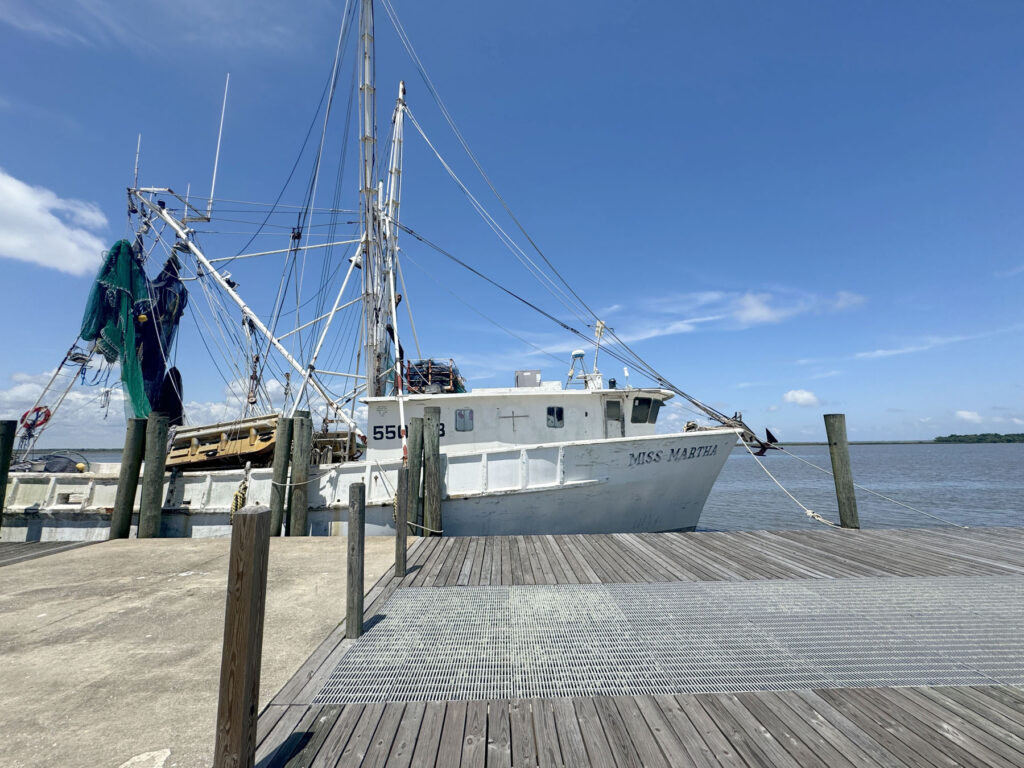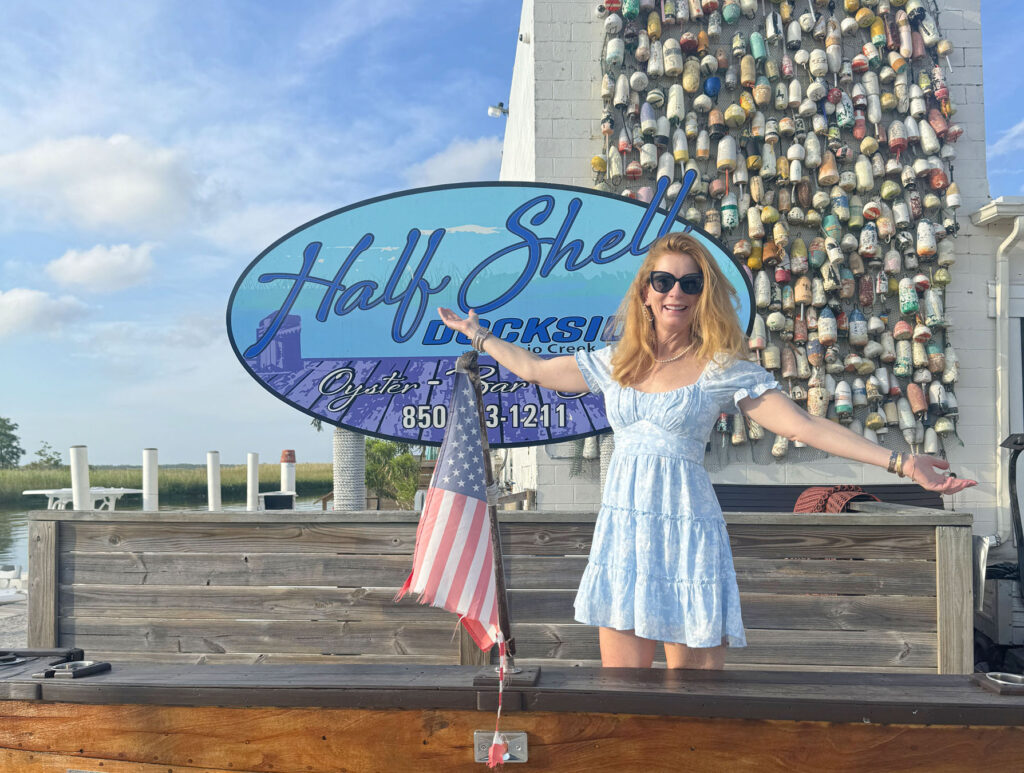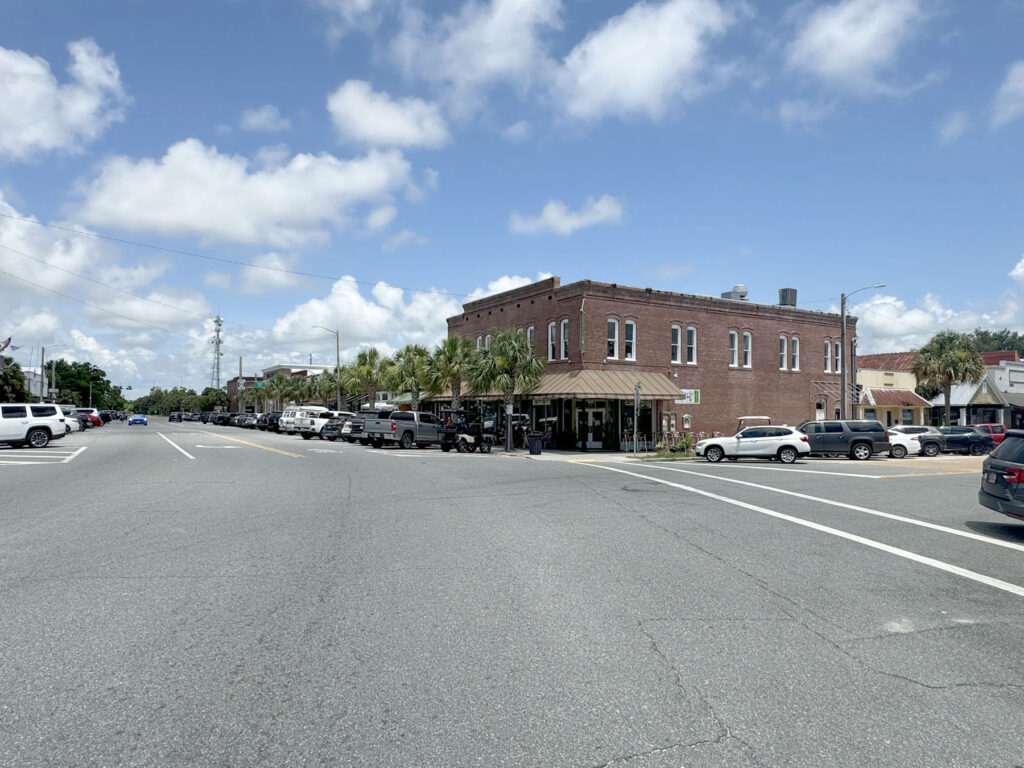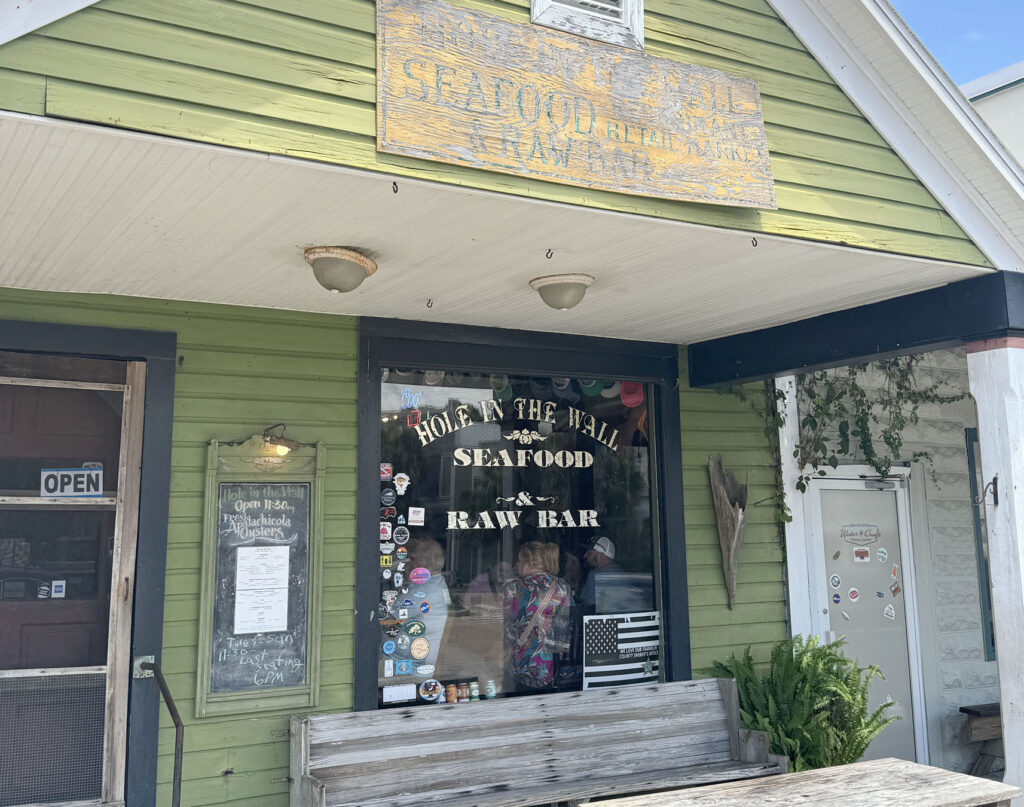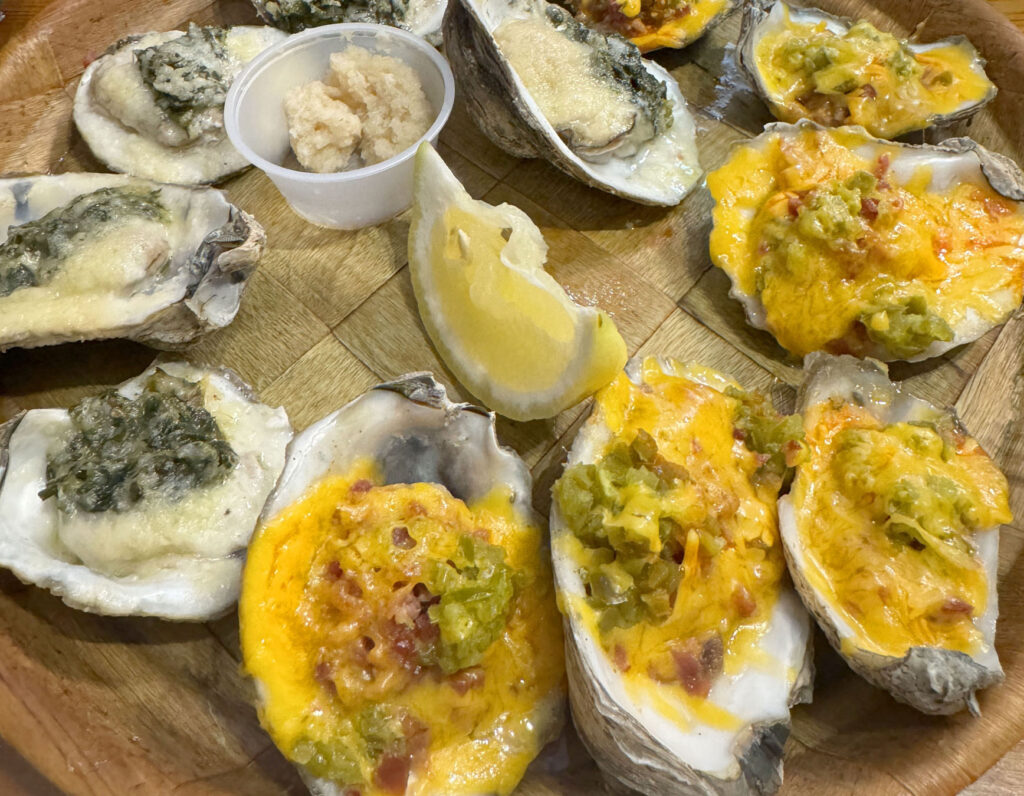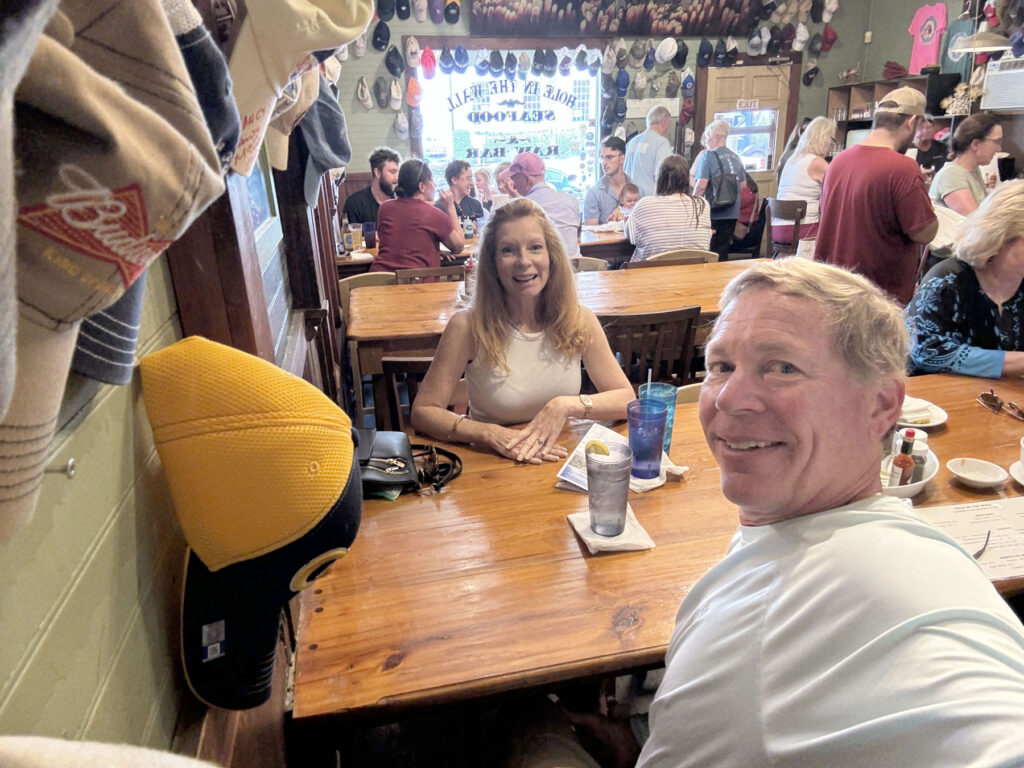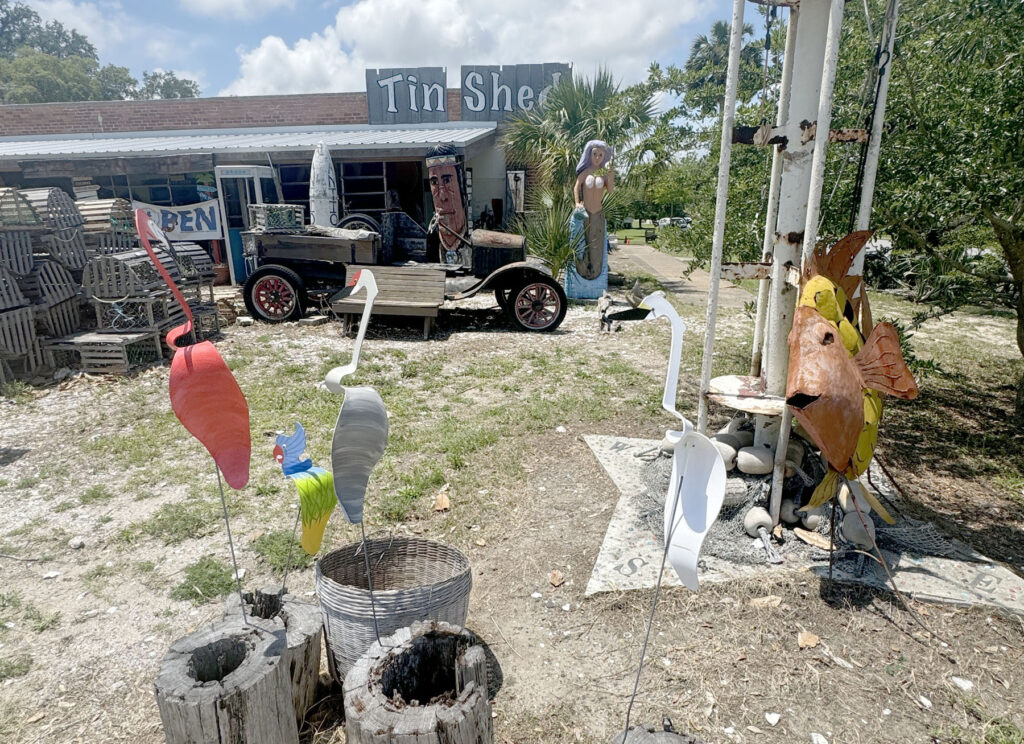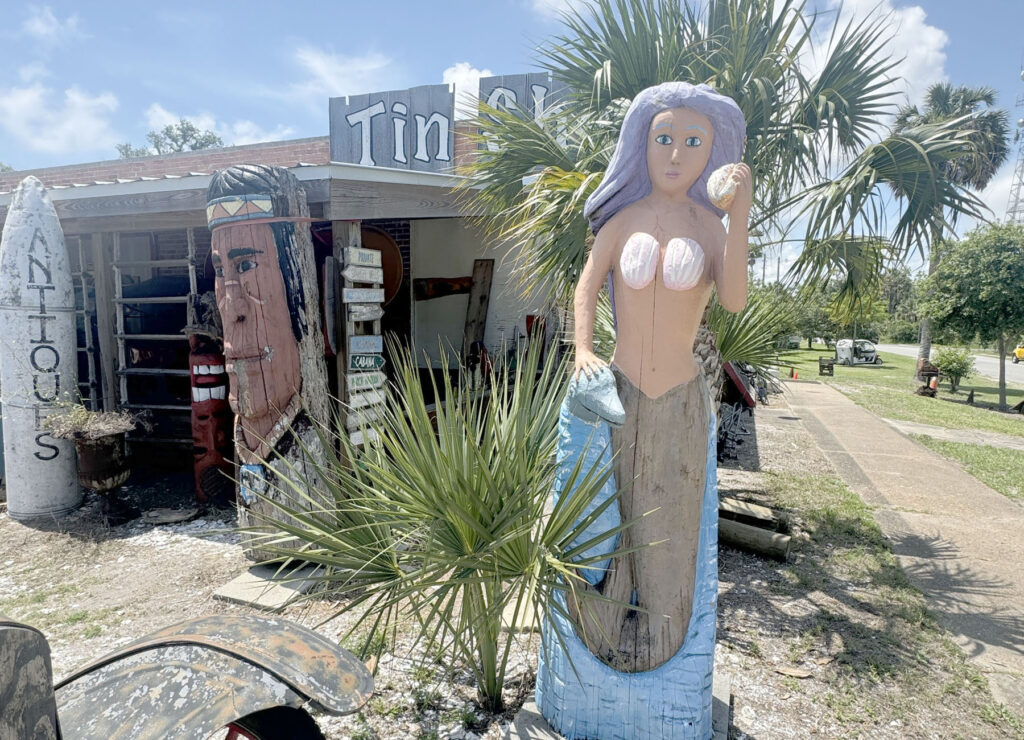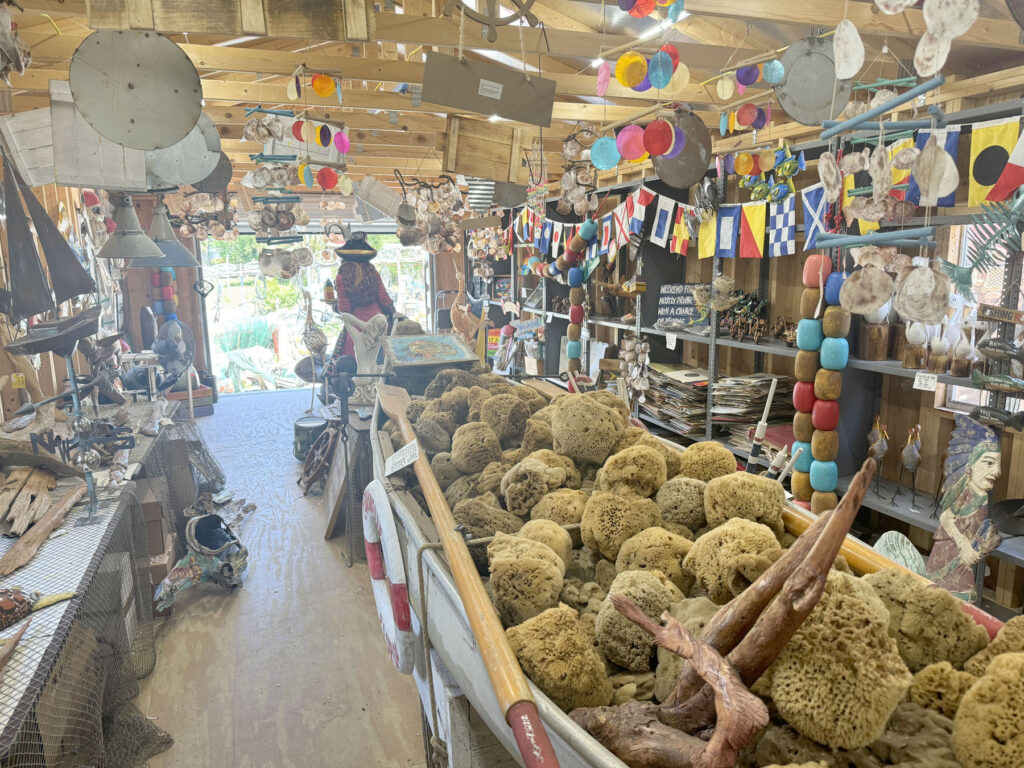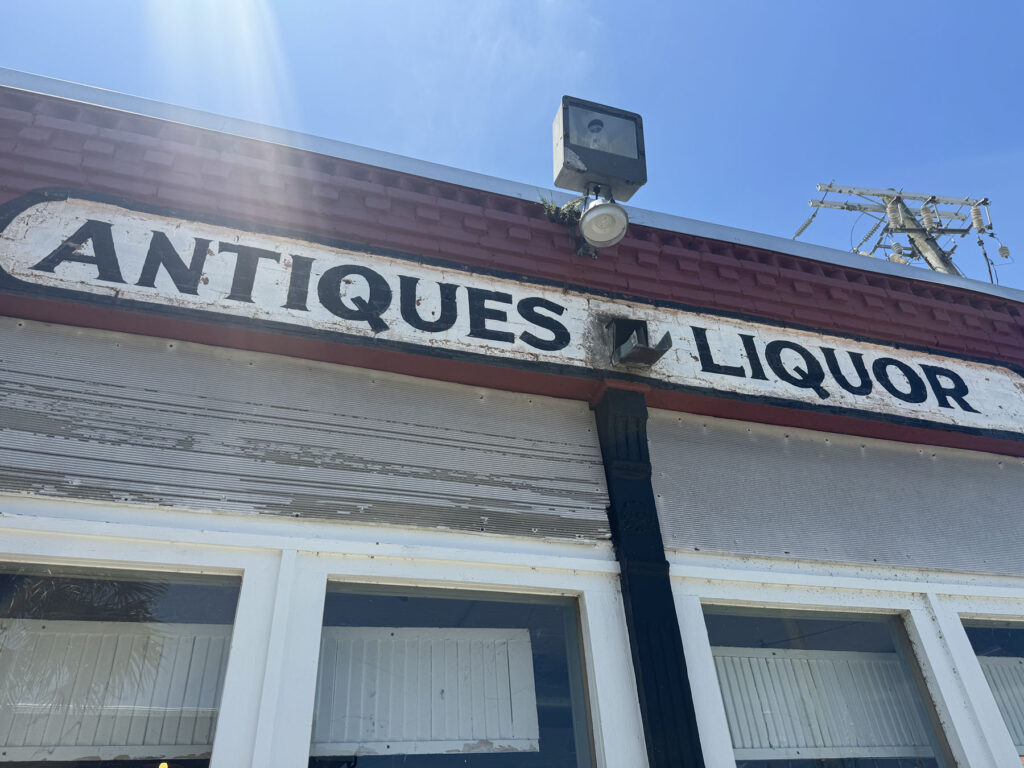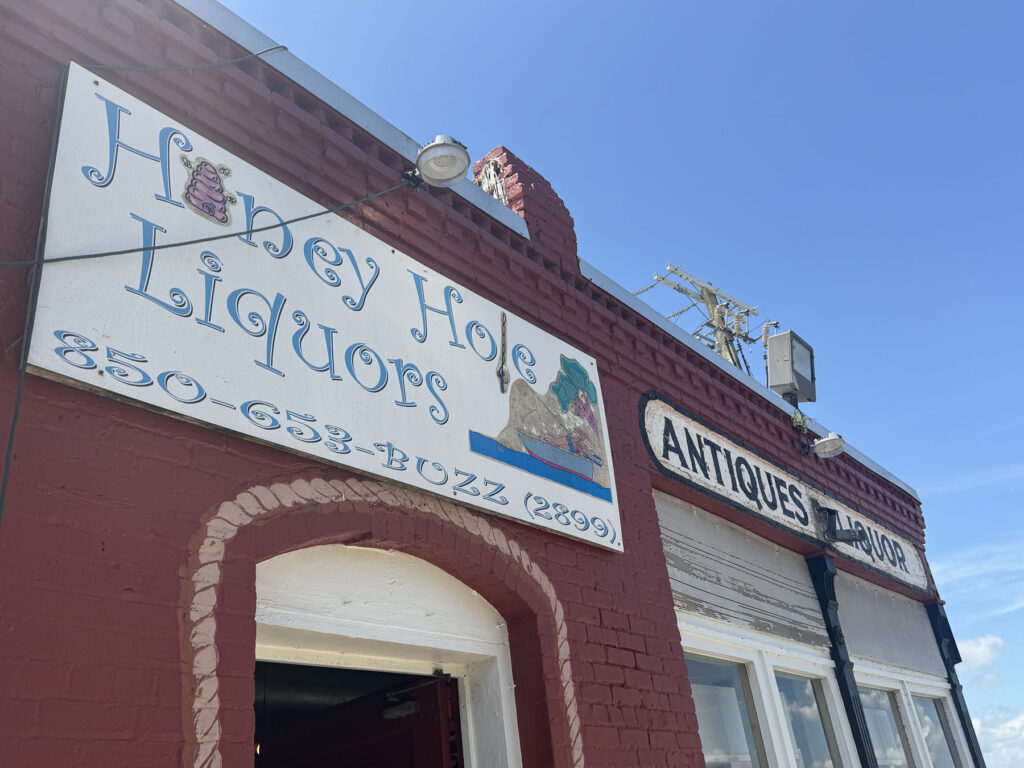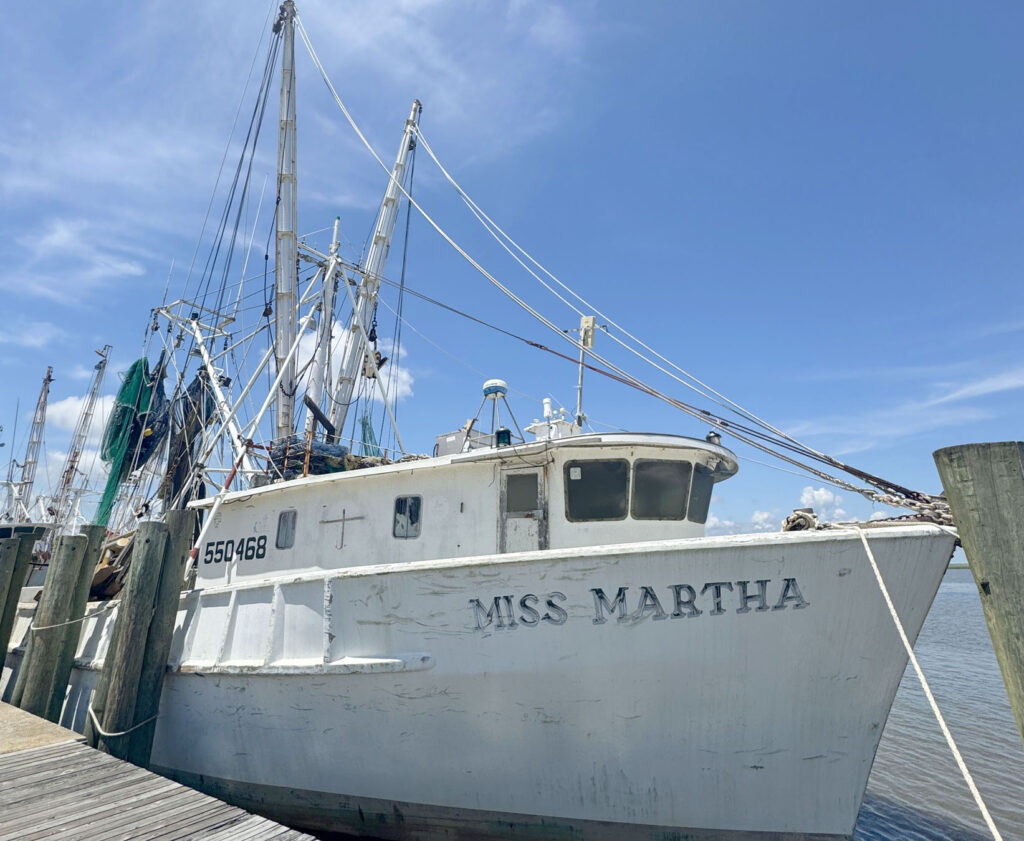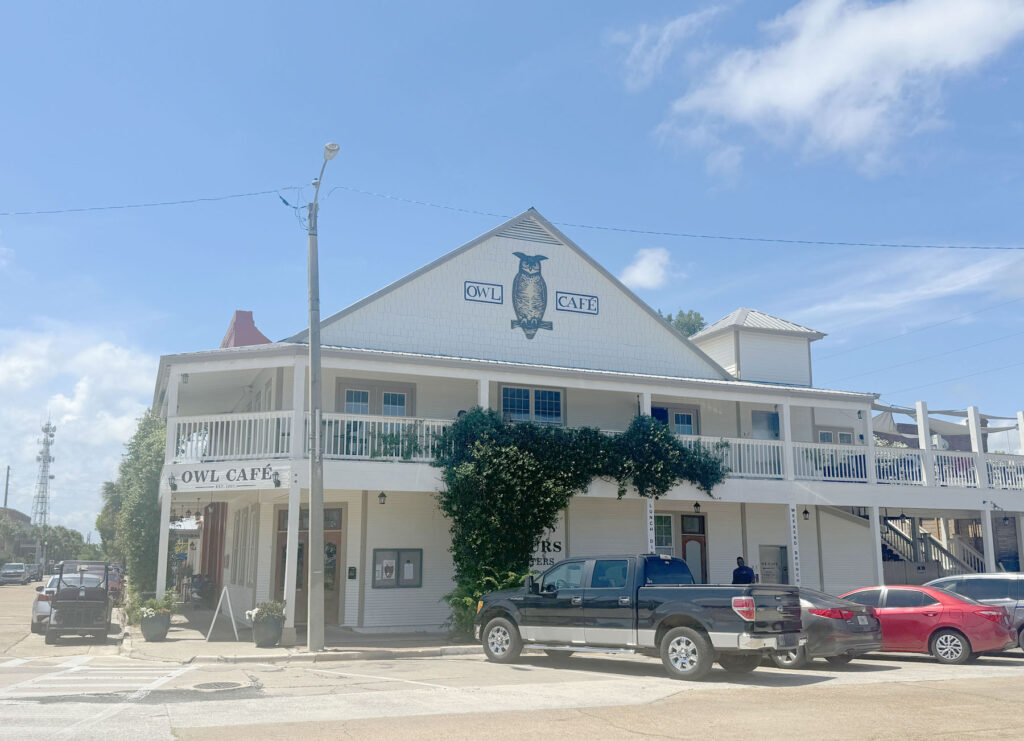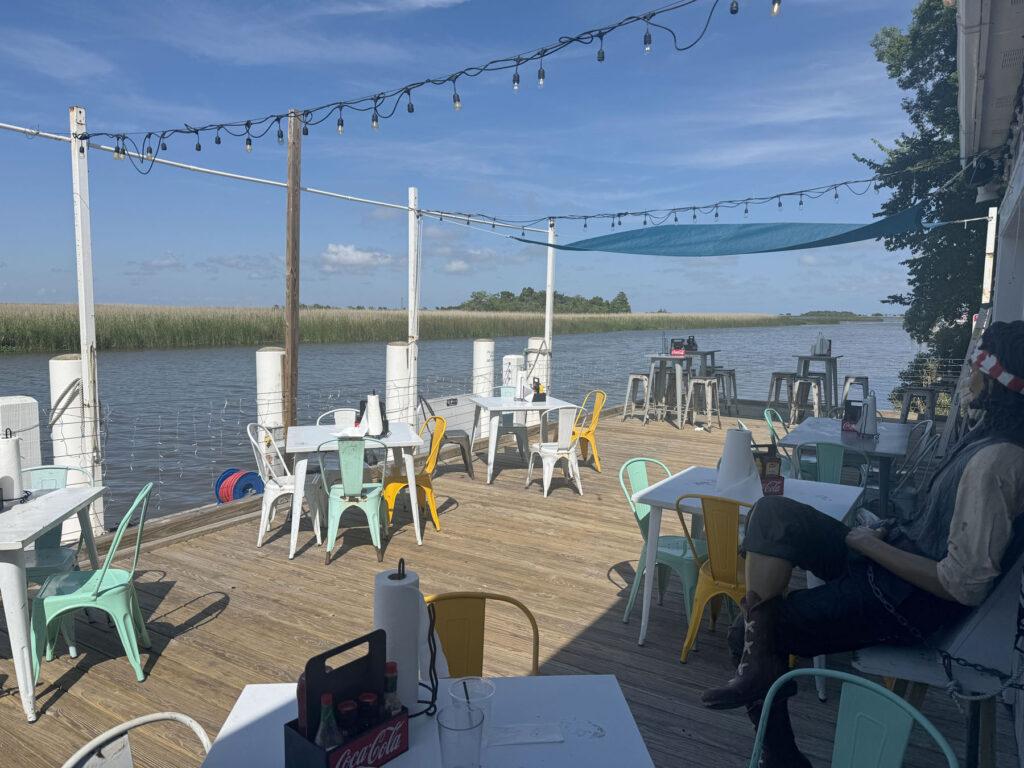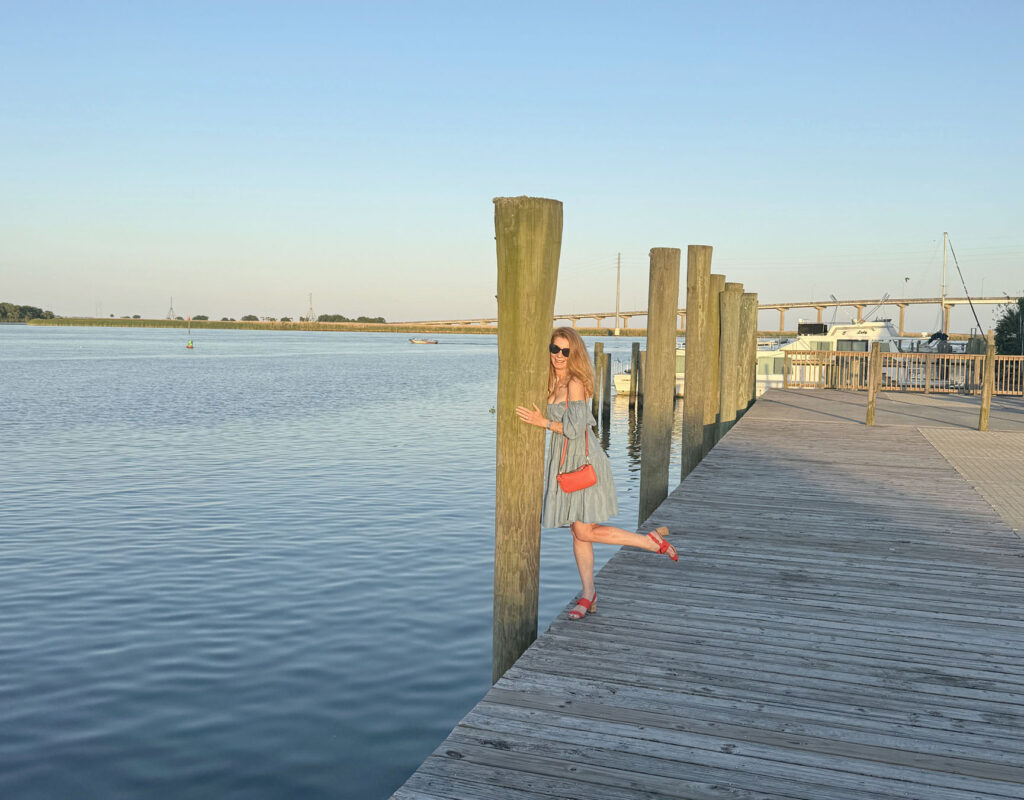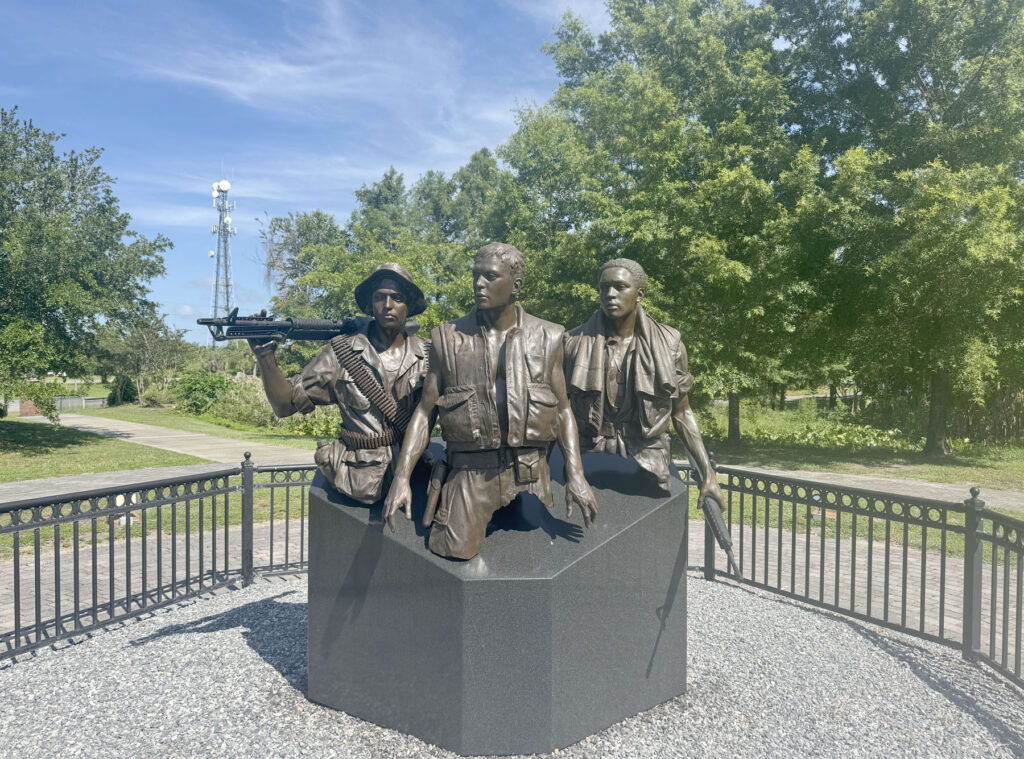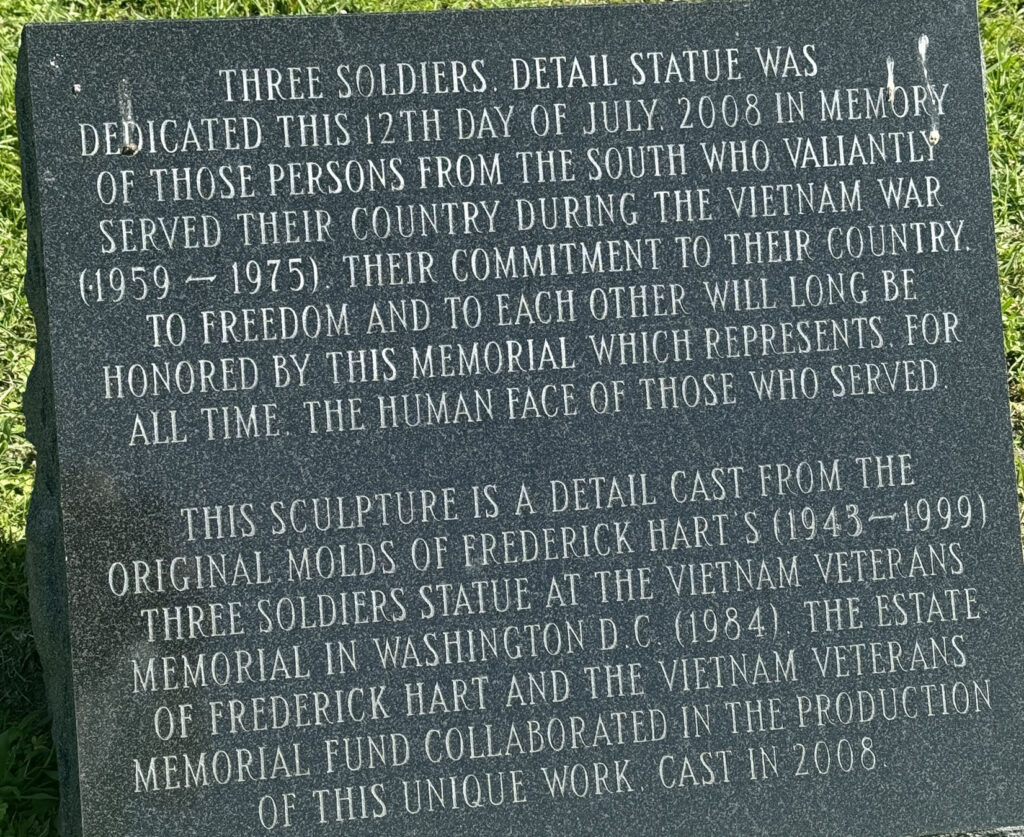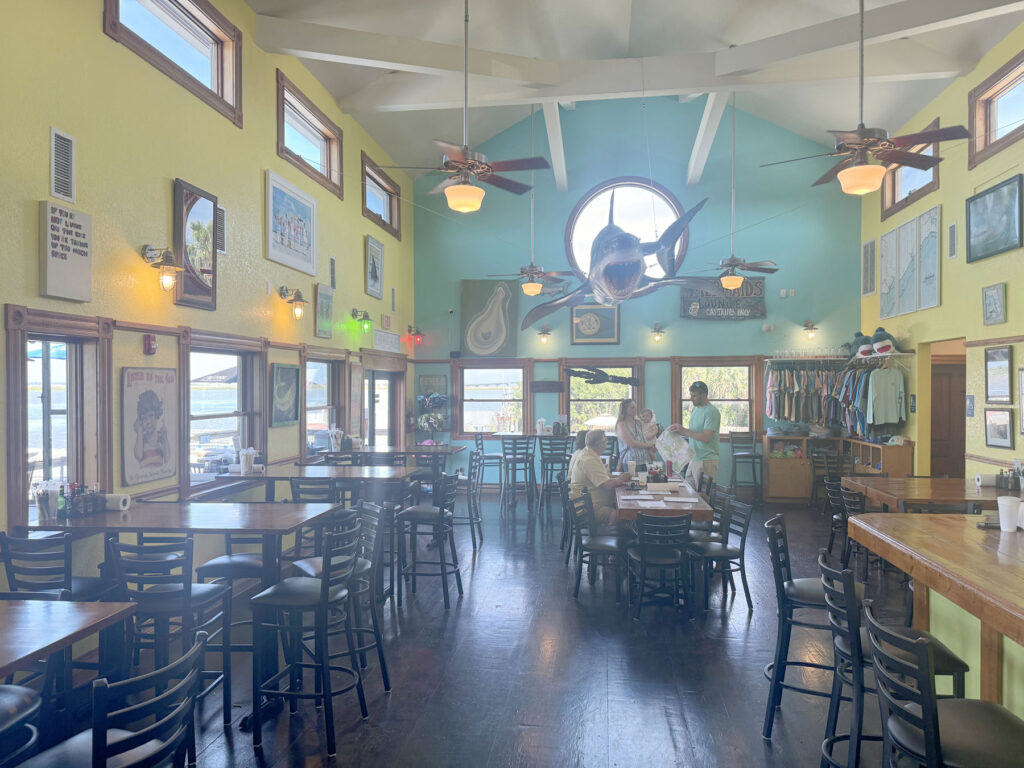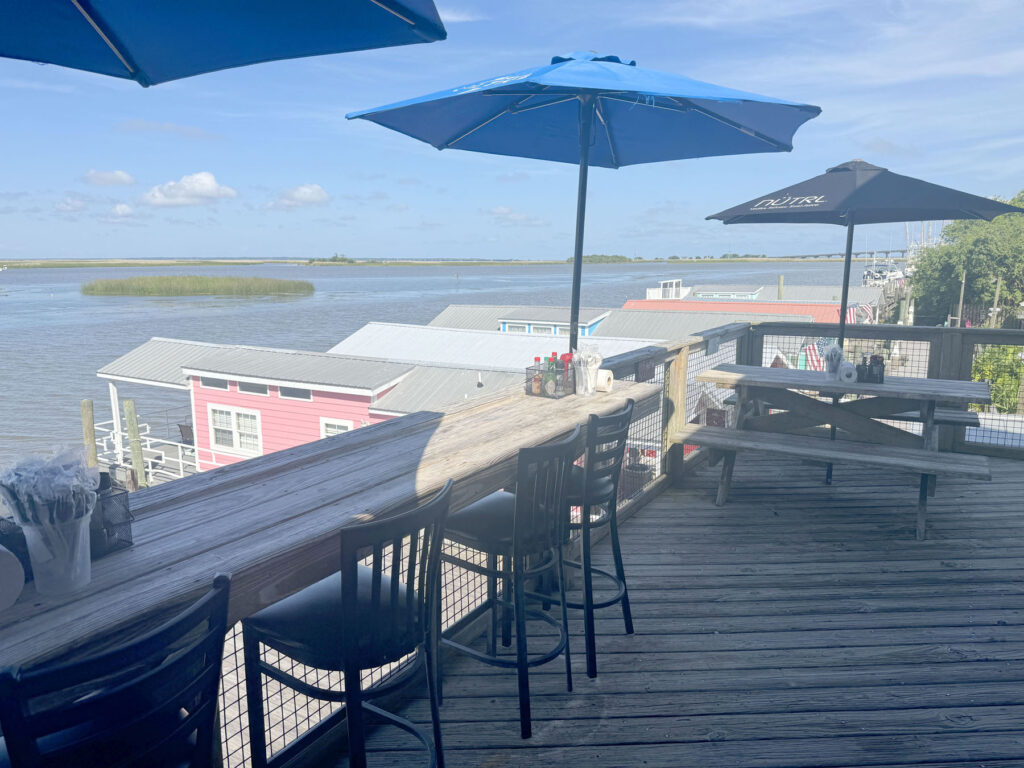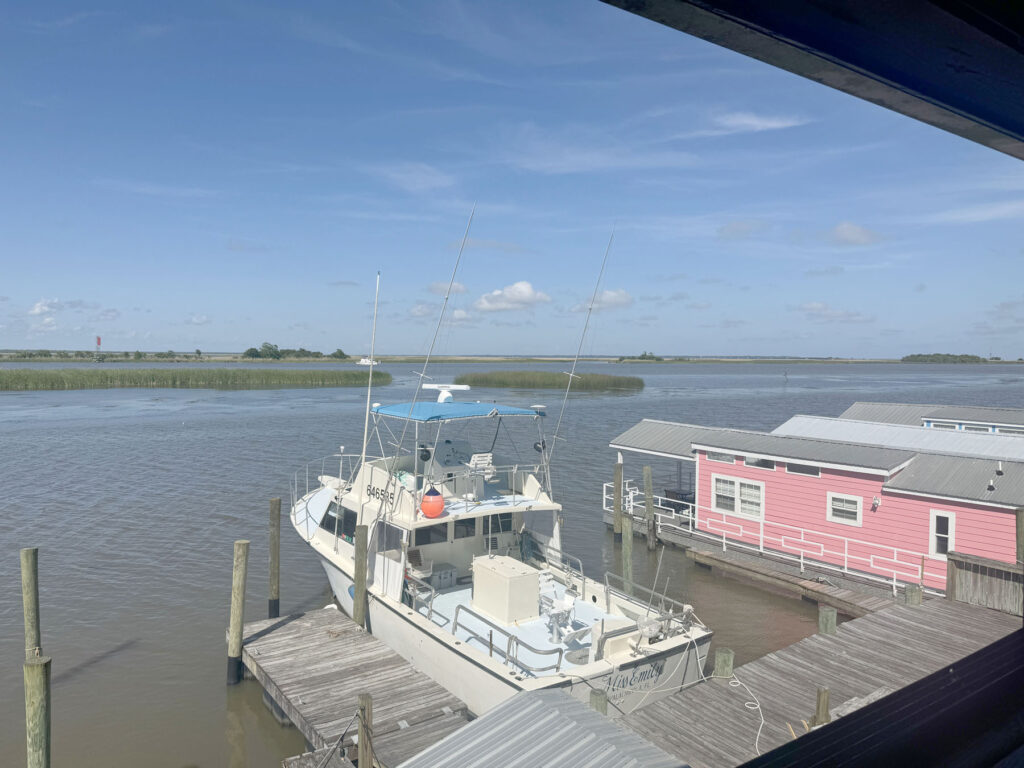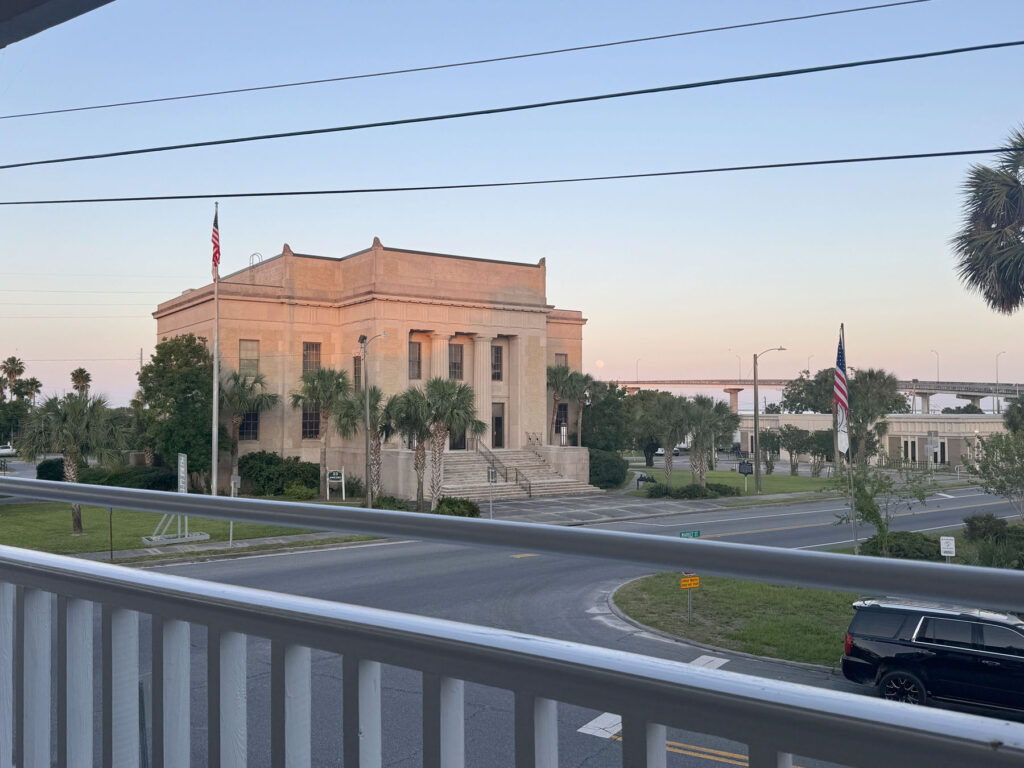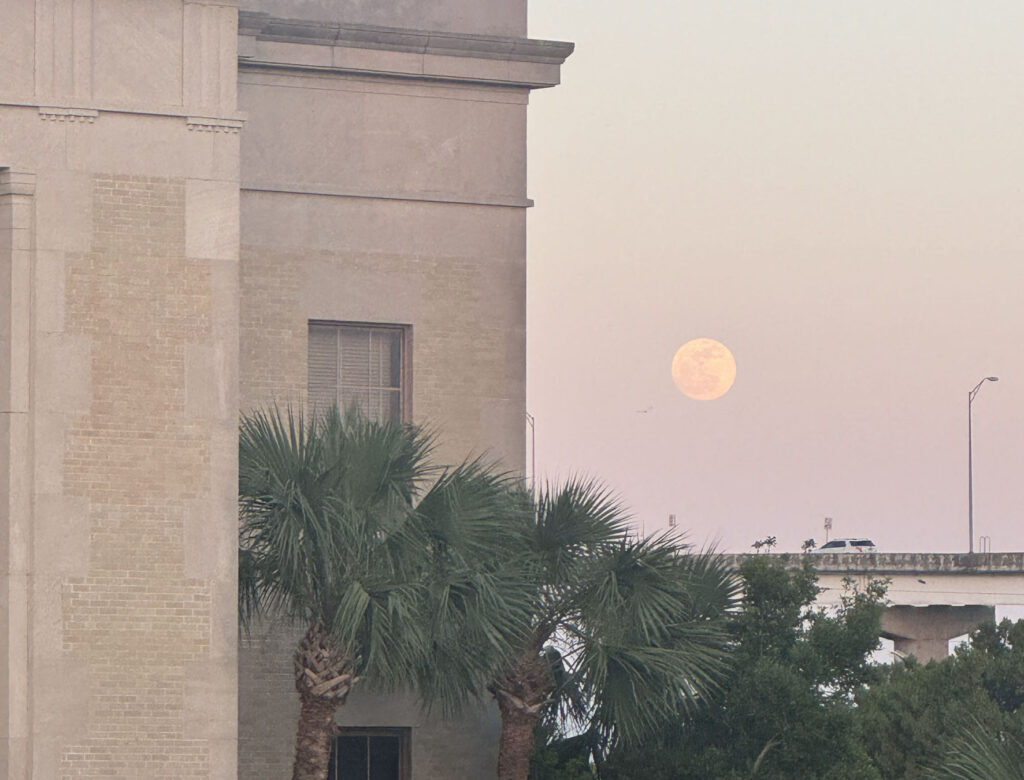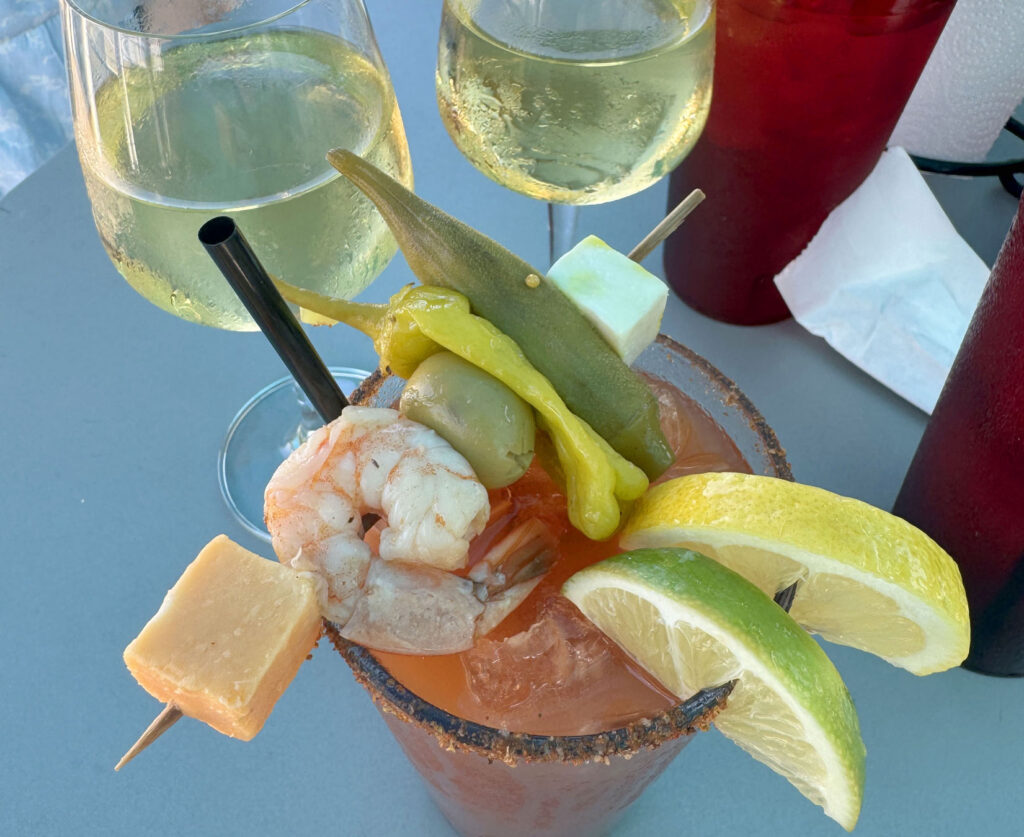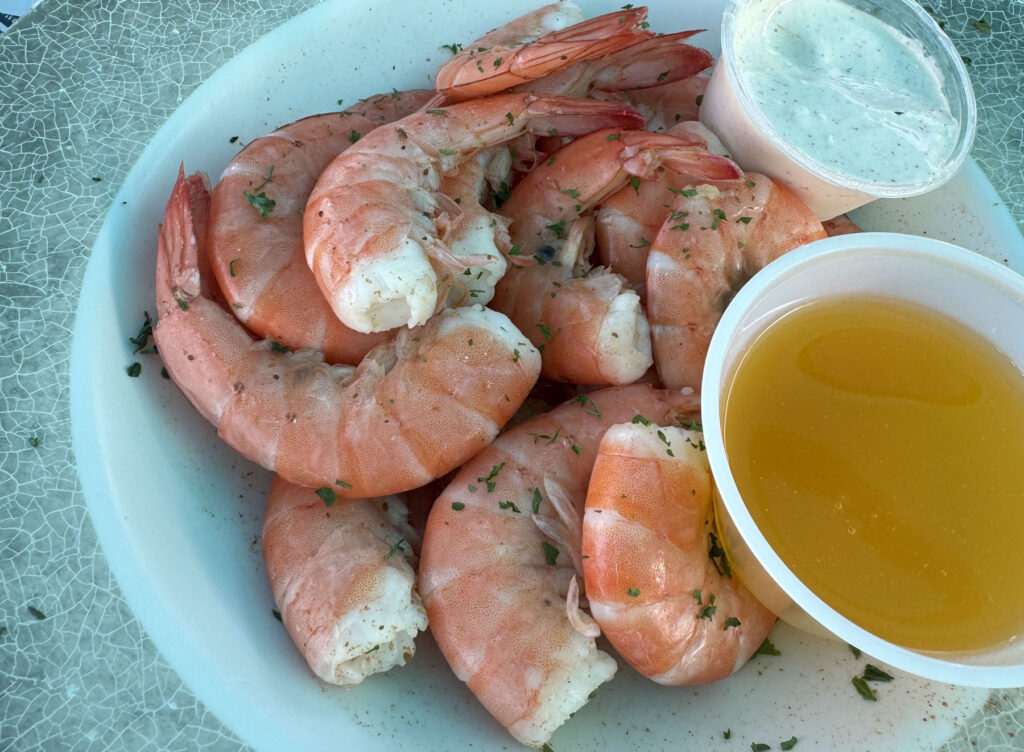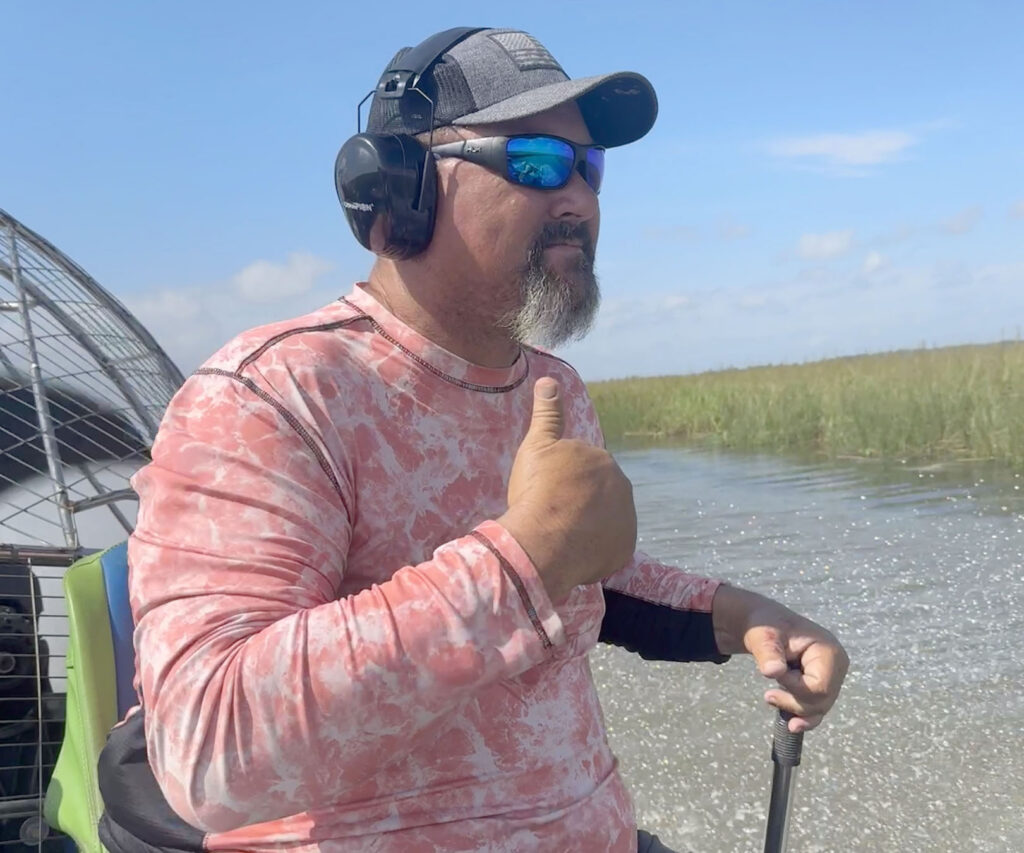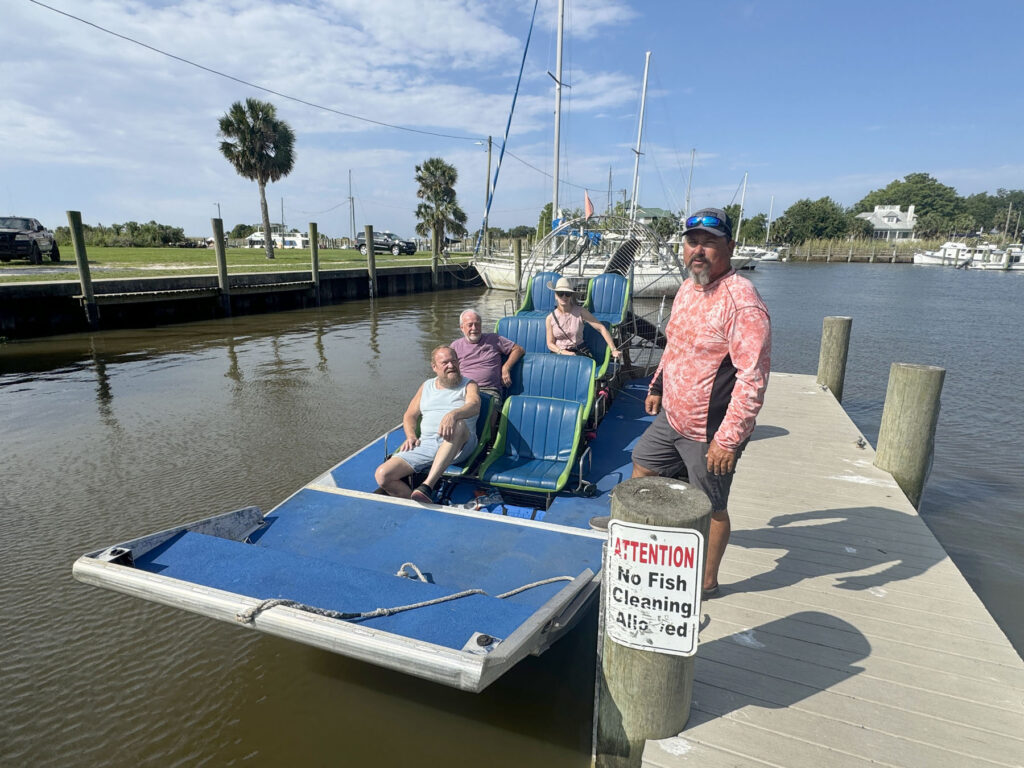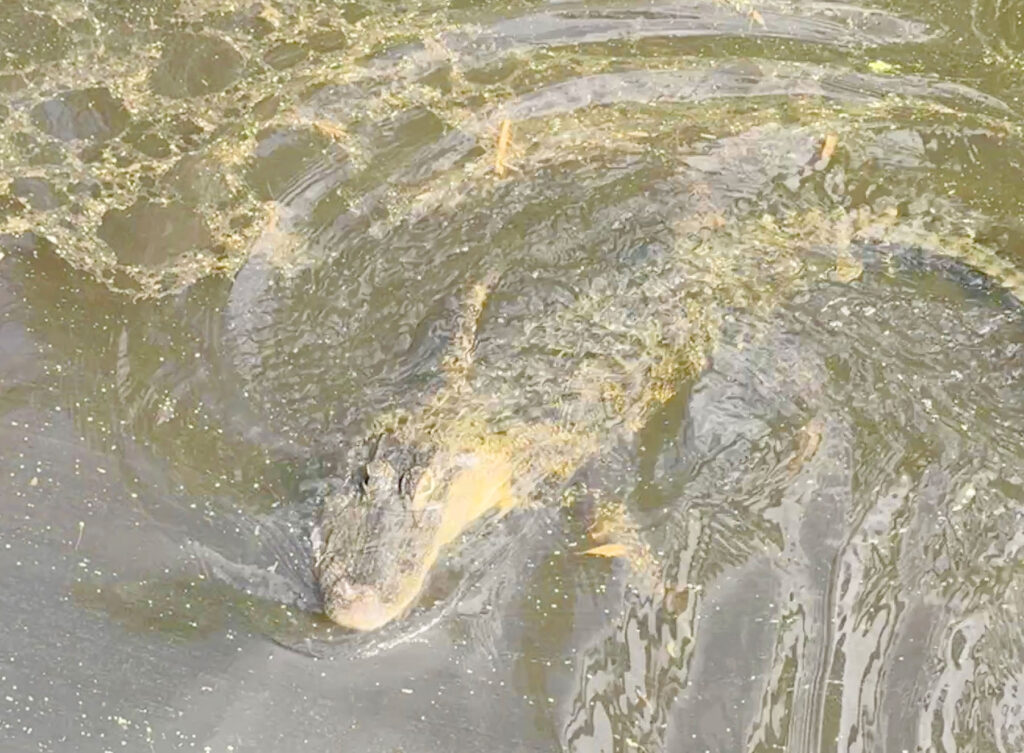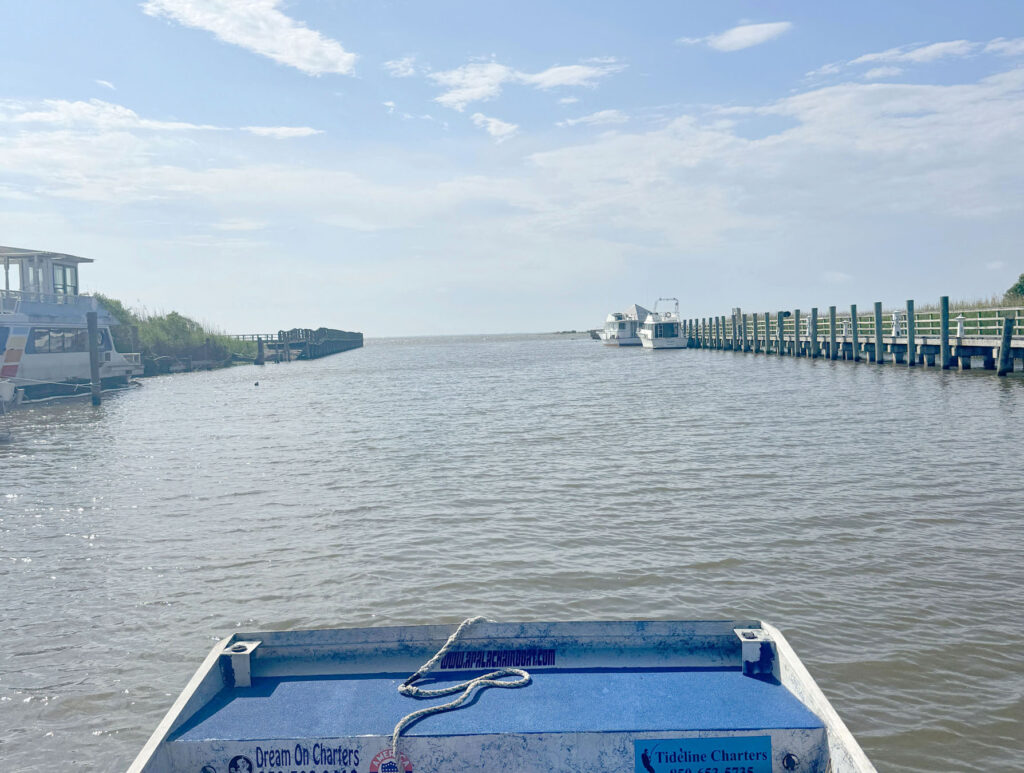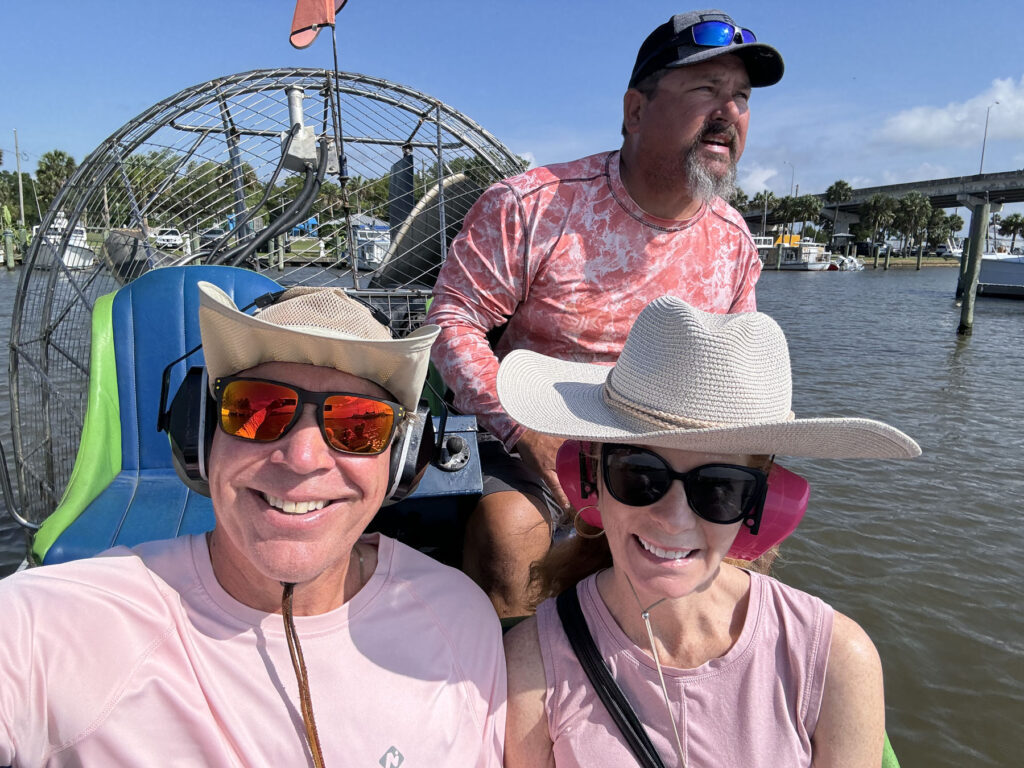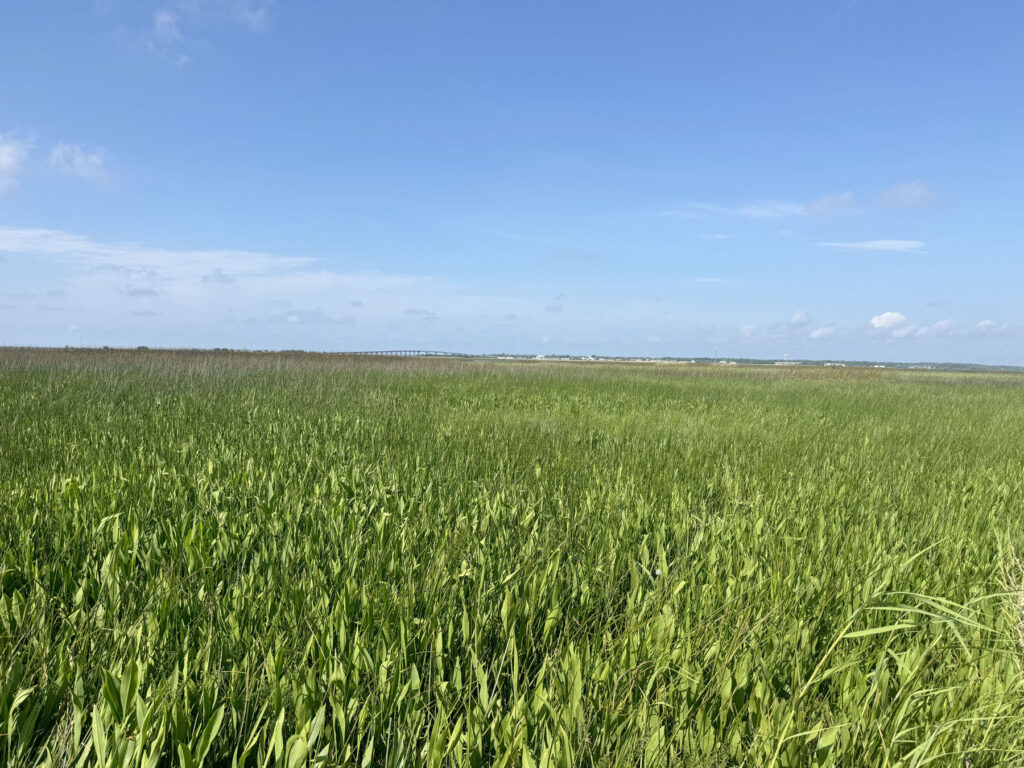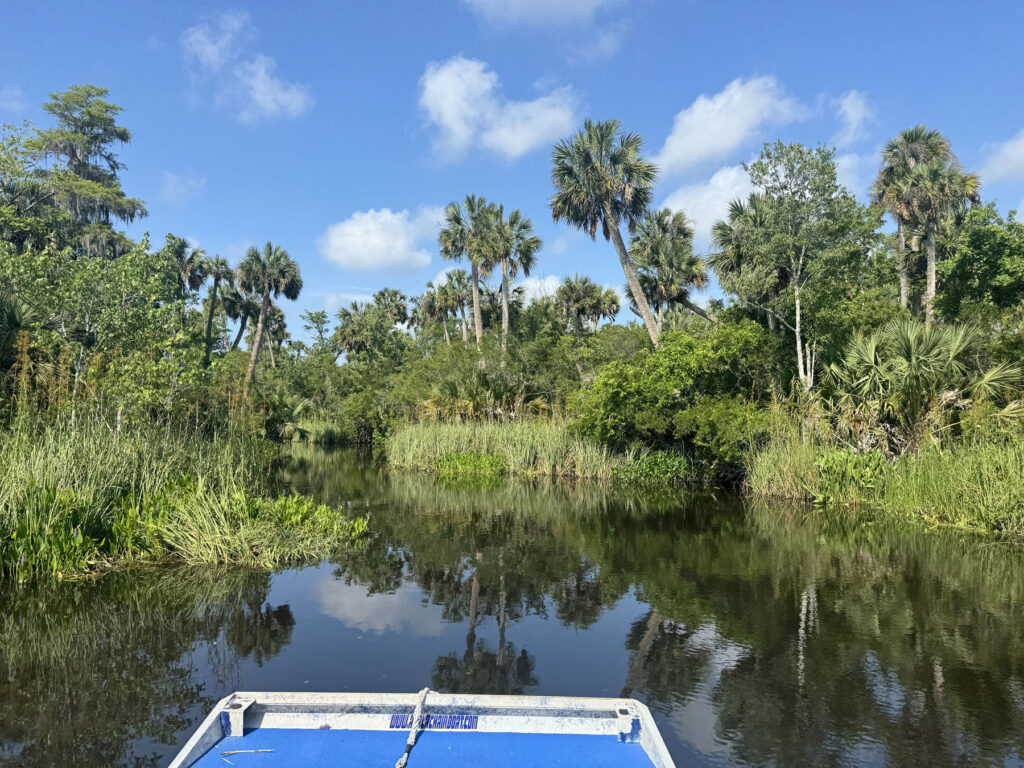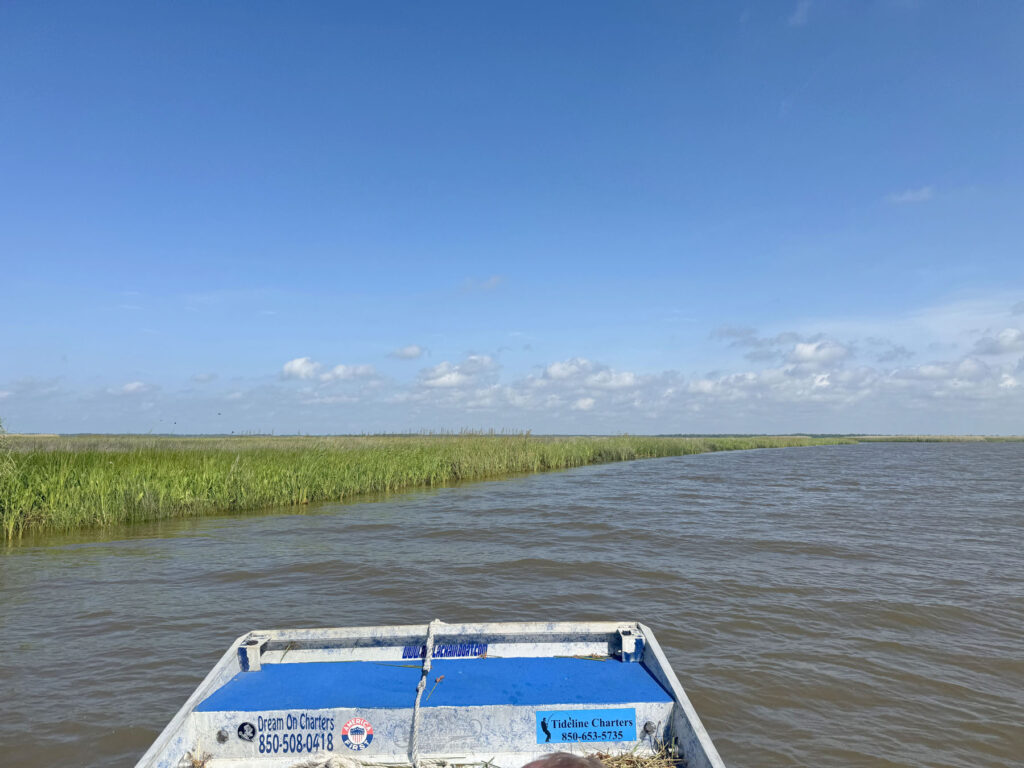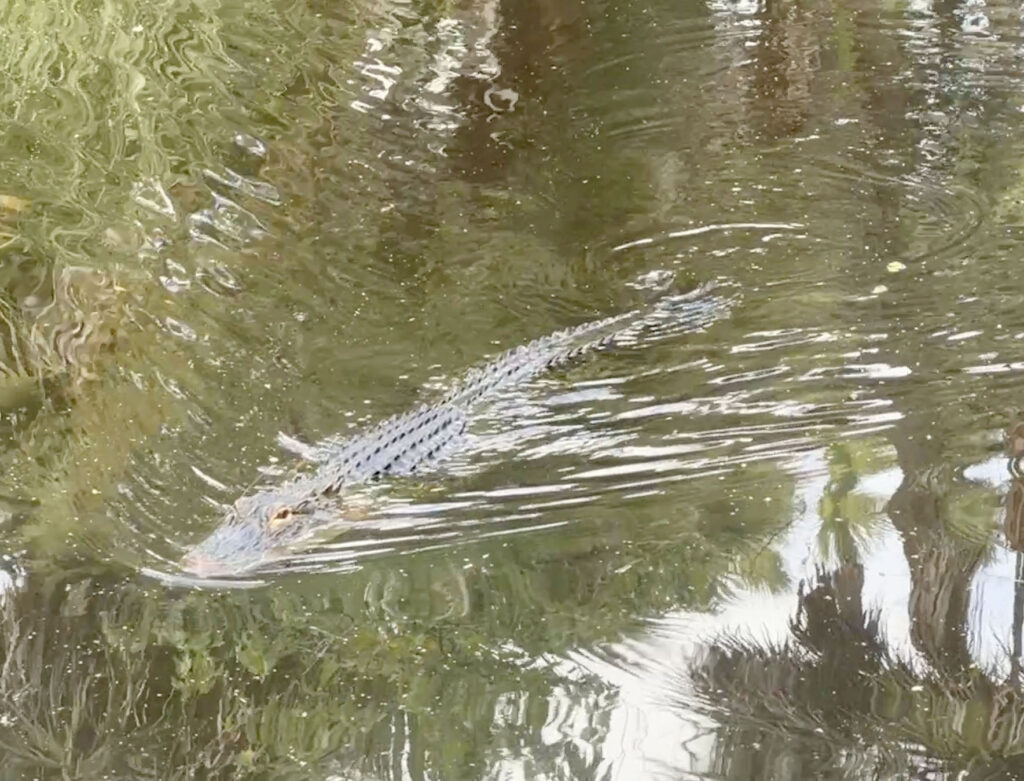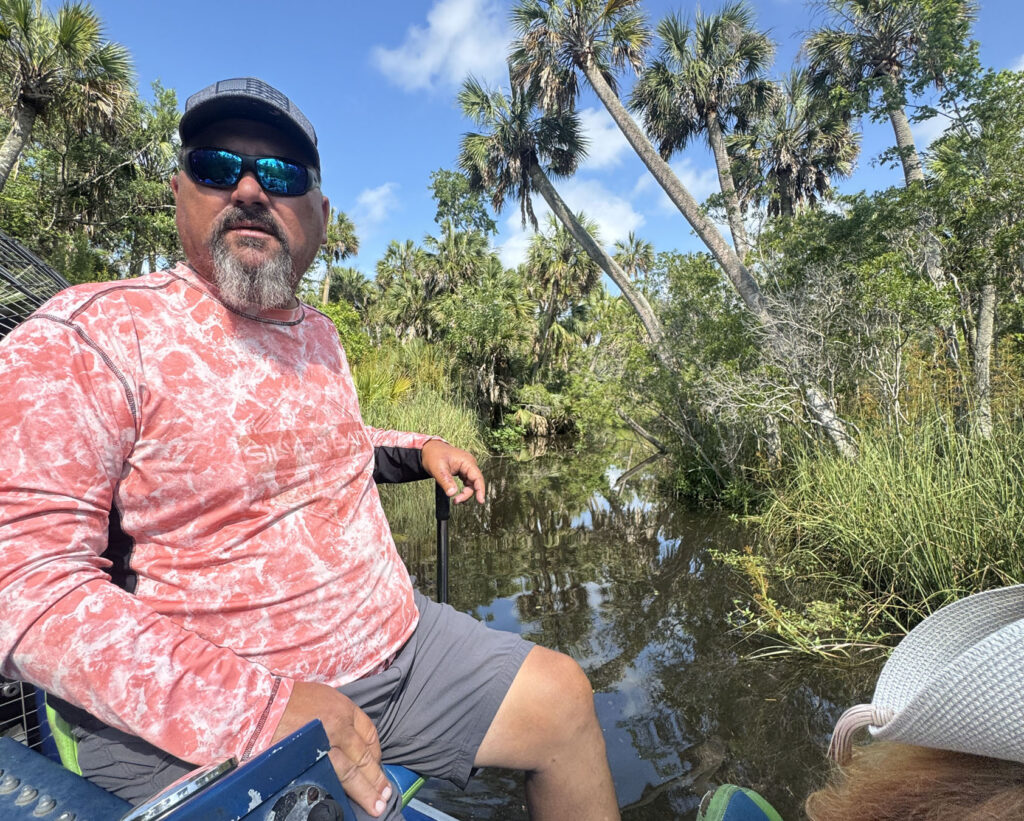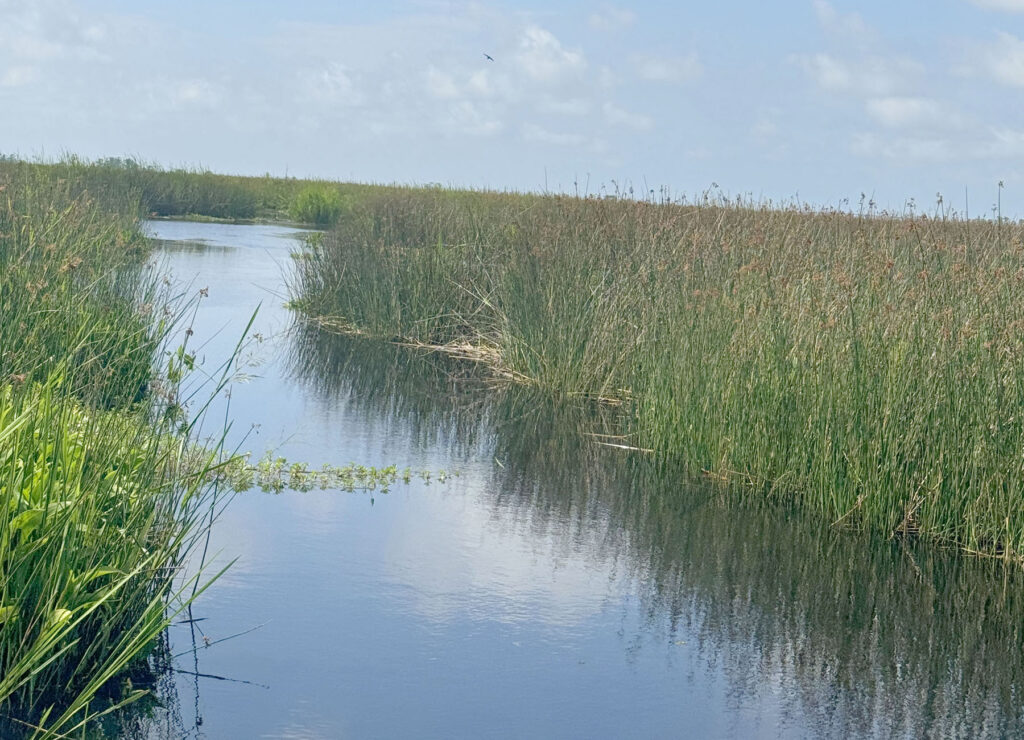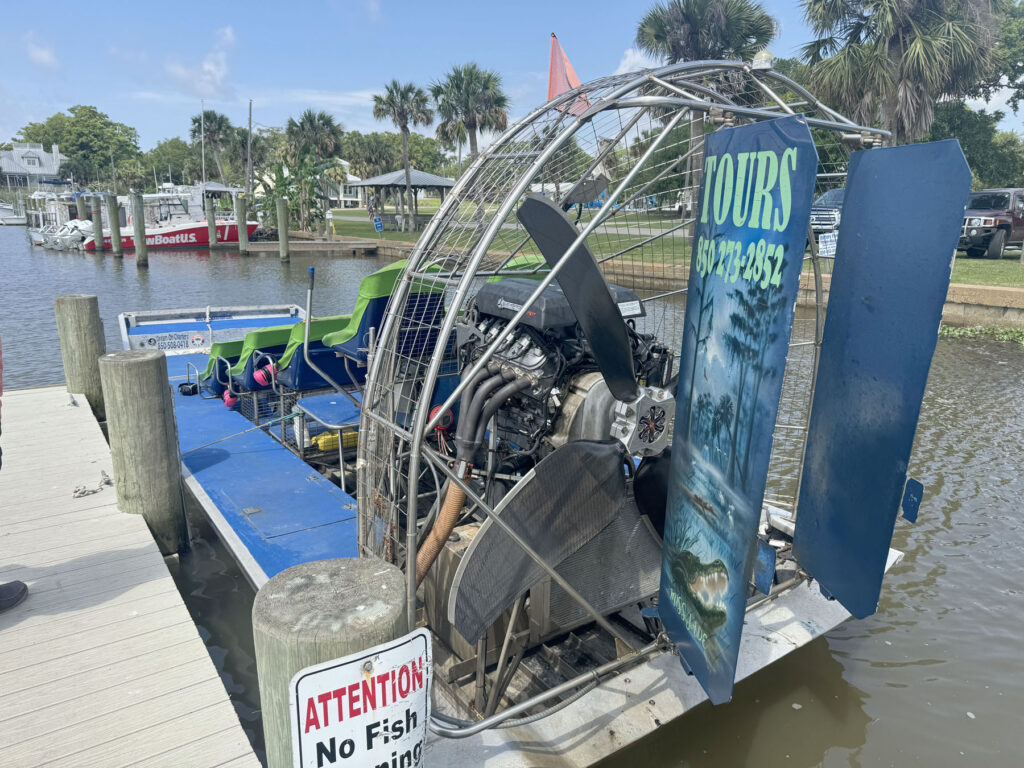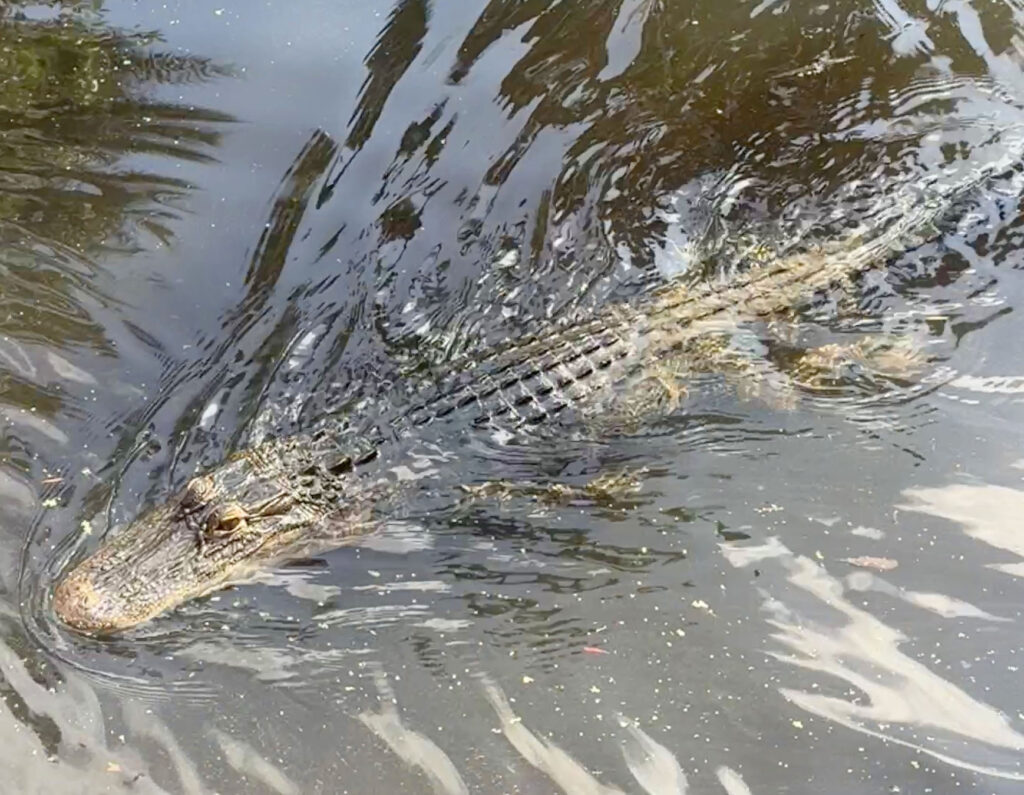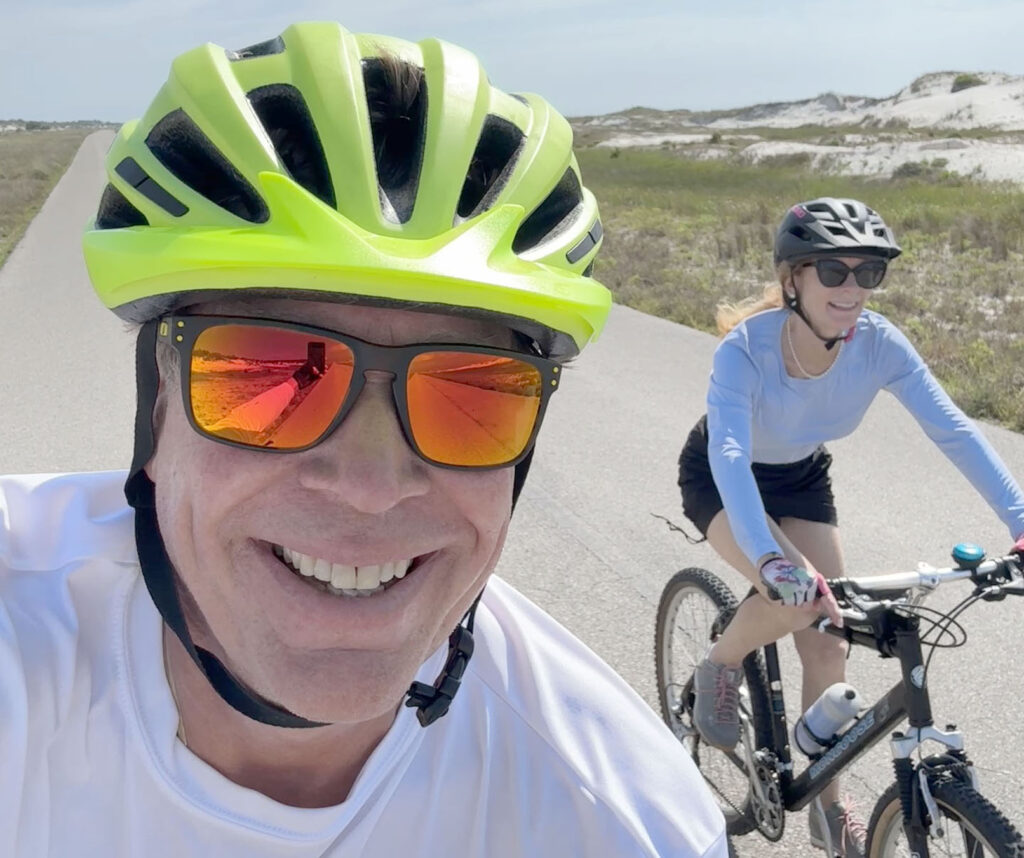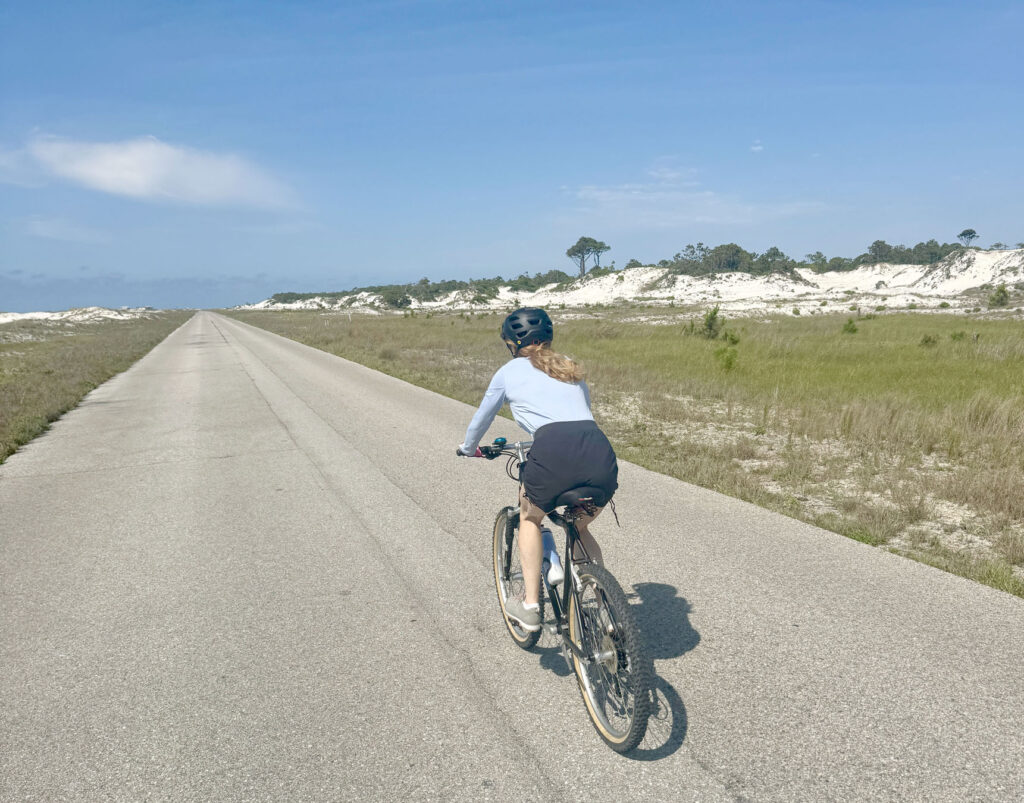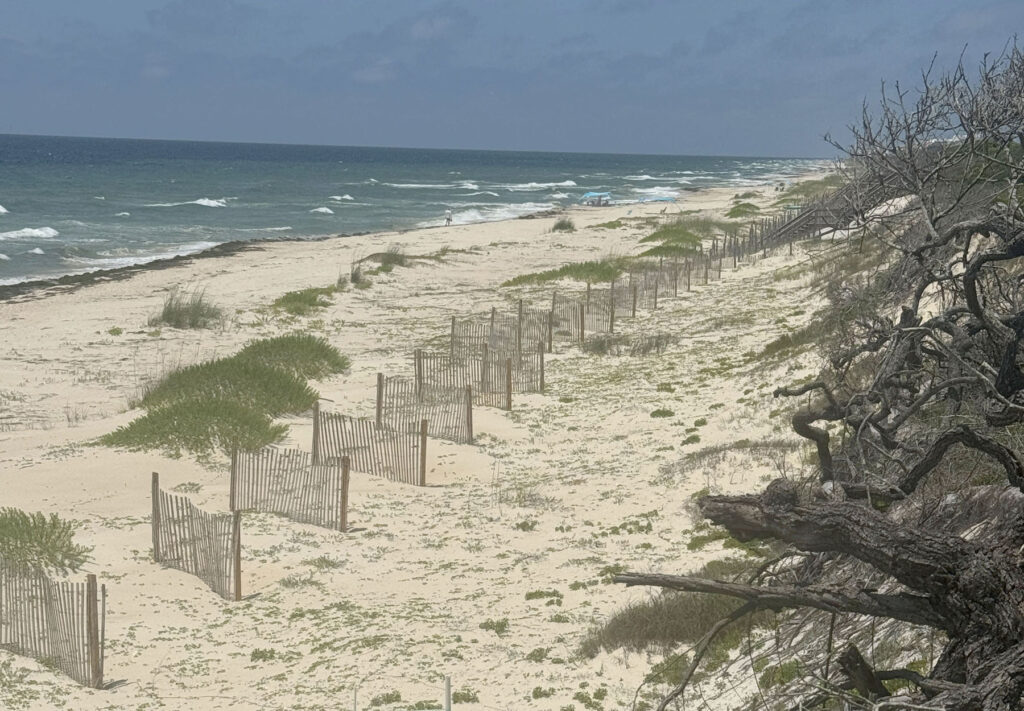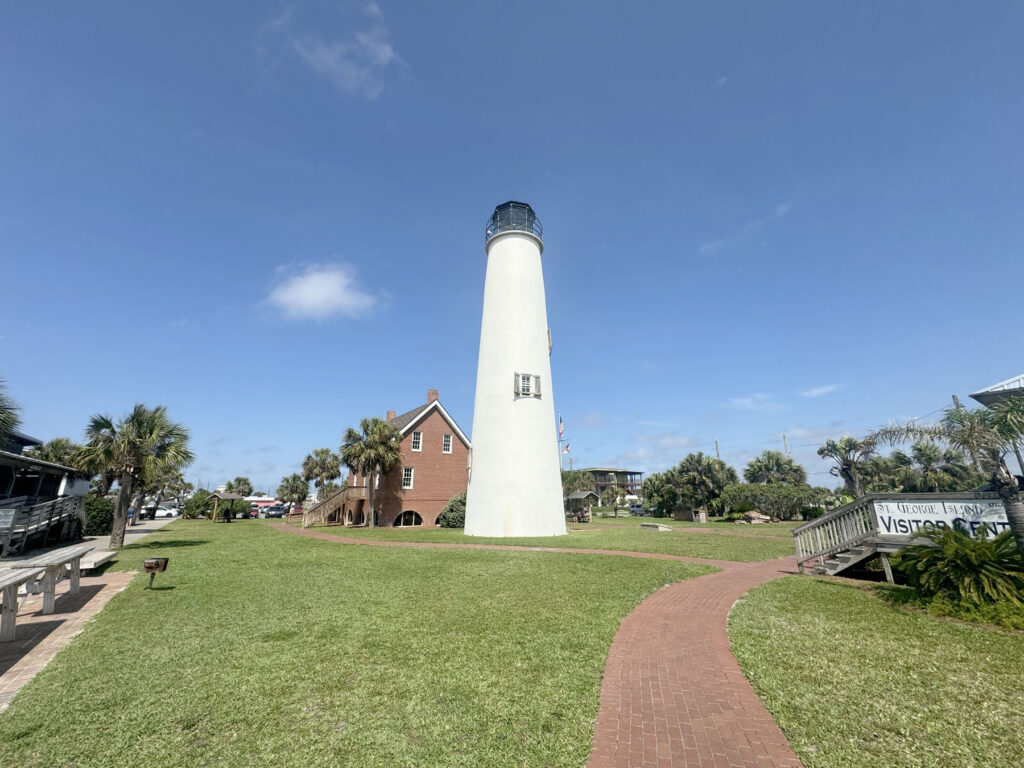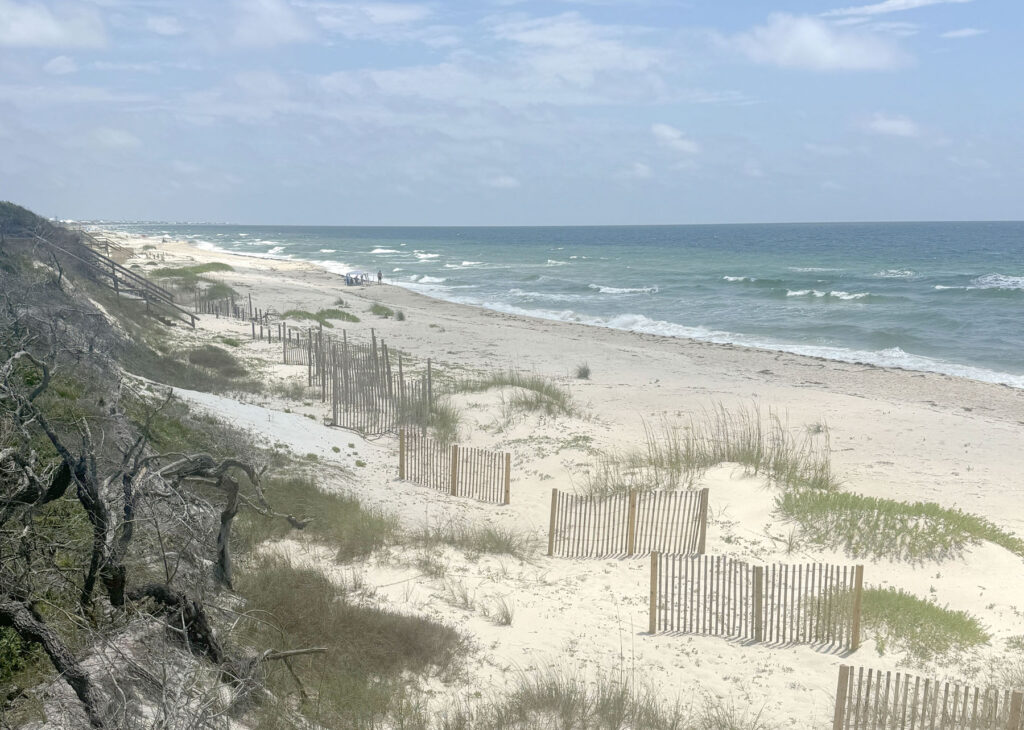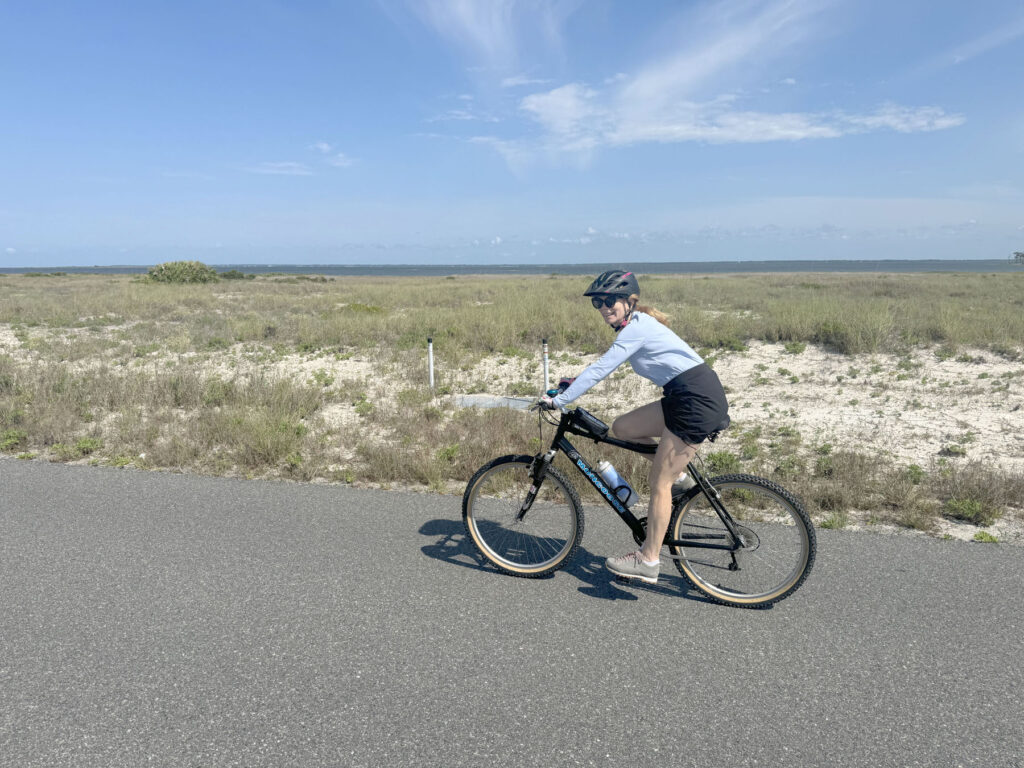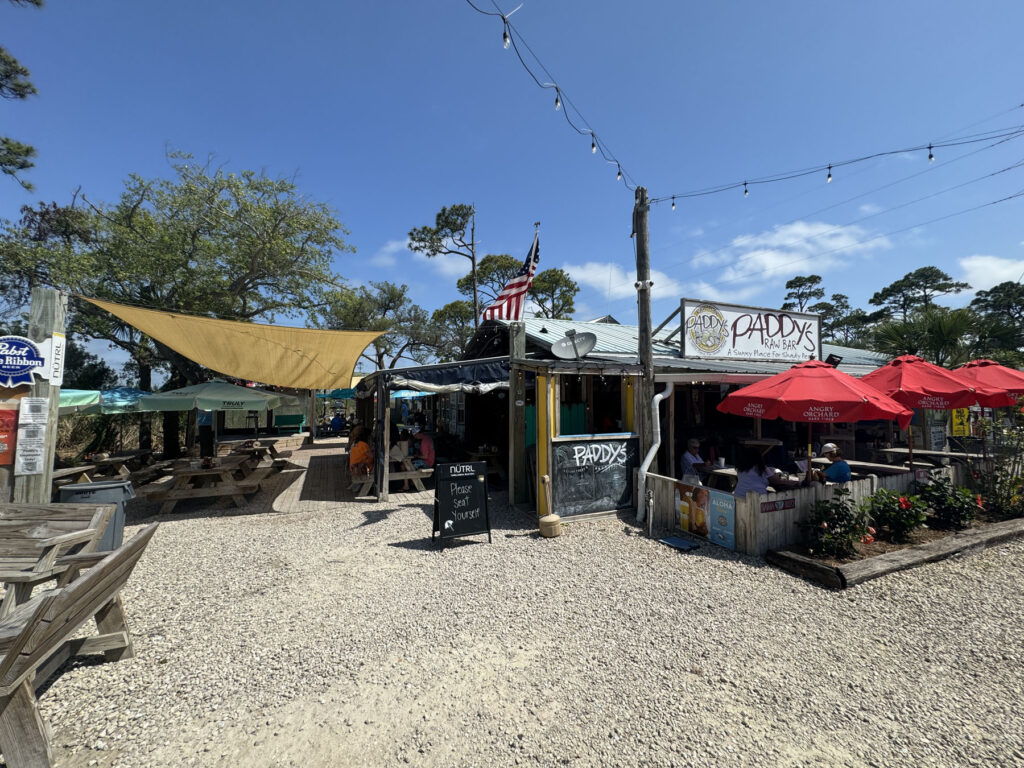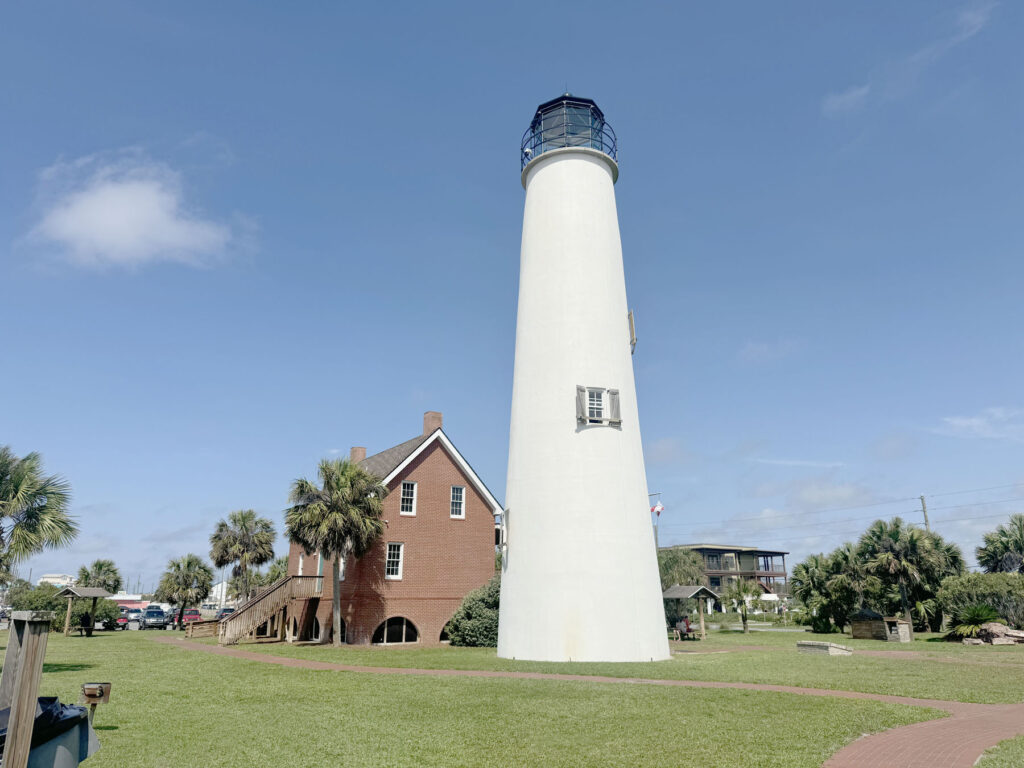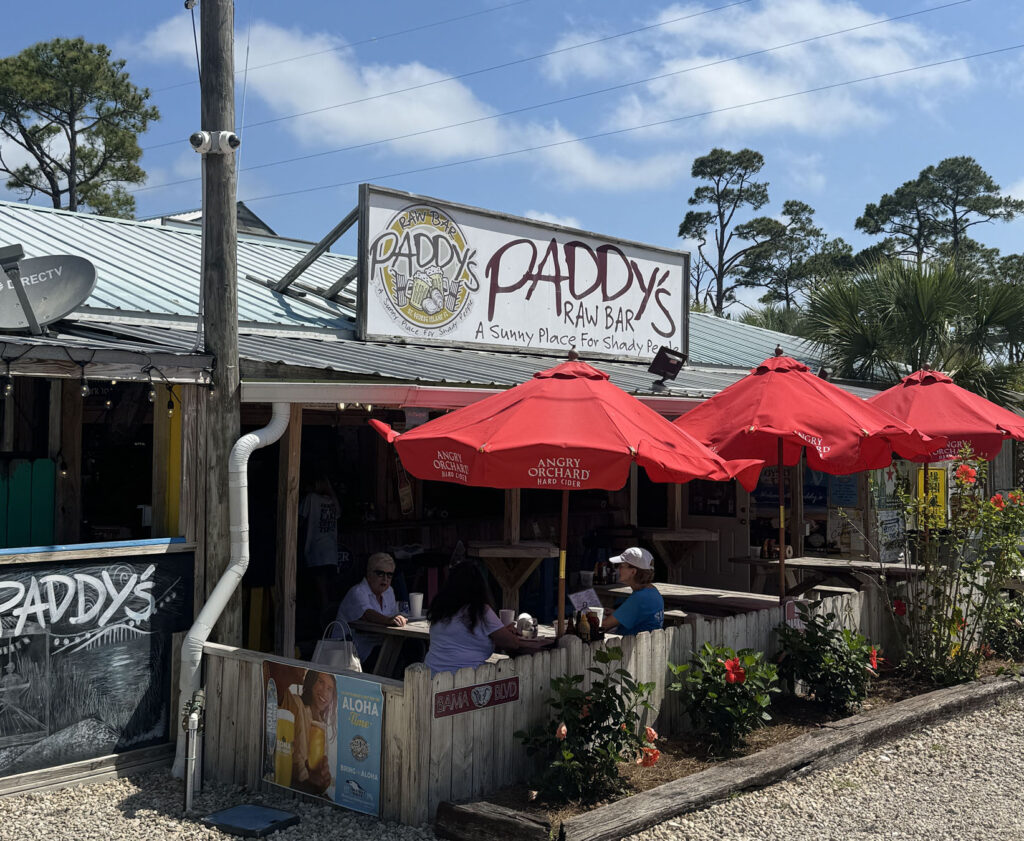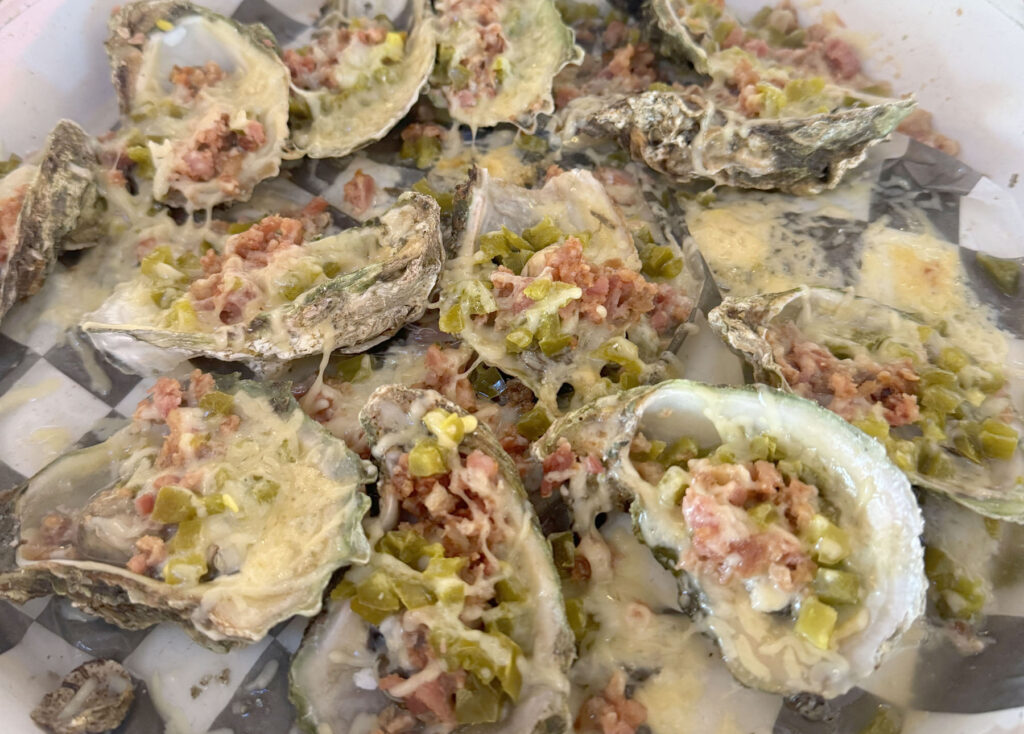Folks jokingly call it the “Redneck Riviera” since this stretch of the Panhandle is “Old-Florida.” Where the sand is white, where fishing, oystering and shrimping are vital, and the villages are a bit rustic. But… truth is, it’s scenically beautiful, down-to-earth- friendly and fun! Apalachicola, at the head of Apalachicola River, is the most quaint rural town on Florida’s Northwest Coast – dubbed “The Forgotten Coast.”
When you tire of the bougie Florida beach resorts, and busy Sunshine State cities, take a trip to Apalachicola – for a refreshing step back in time, for authentic hospitality, delicious fresh seafood, undeveloped waterways and marsh, barrier islands to explore, plus a cute downtown with just enough sophistication for a pleasant few nights’ stay.
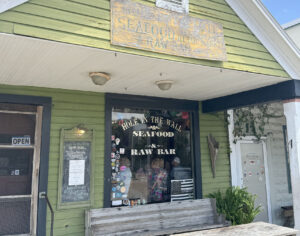 How to best “while away” a few days in Apalachicola:
How to best “while away” a few days in Apalachicola:
Stroll Apalachicola’s downtown, it’s a postcard-perfect place with simplistic street names, Water, Commerce, Market, as you go inland from Apalachicola Bay. Apalach, local-speak, dates to 1813, and was once the 3rd busiest port on the Gulf of Mexico. Evidence of its tremendous trade remains along the waterfront warehouses and historic grand merchants’ Victorian mansions. Apalach was a hub for sea sponge harvesting, oyster and shrimp fishing, and fishing net production. Now it’s a colorful small town to explore by foot, bike or boat.
Lunch on Local Oysters. We almost walked past “The Hole in the Wall” but we’re glad we poked into this old-school eatery – part diner/part museum. Here we savored the best roasted oysters – Rockefeller and bacon cheddar jalapeño, not fancy, served in paper-lined baskets at communal tables, but delicious! Oysters became virtually extinct in the bay a decade or so ago. They had been over-harvested for sure. But the nail in the coffin for the oyster population was upriver Georgia, when water was damned and diverted, depleting oysters of needed brackish (combo of fresh and saltwater) environs to survive. Now, famous Apalachicola Oysters are being responsibly farm-raised in the bay. Locals say wild oysters are making a comeback too, they hope the federal government will allow them to harvest natural oysters again soon. More good news for the Bay, oysters are major water filters, in addition to being decadent sweet salty treats, so they help cleanse the Gulf Bay and keep it crystal clear. I recommend you only eat warm water oysters cooked… from reputable, clean (air-conditioned) kitchens.
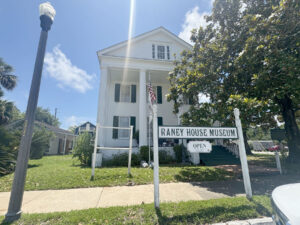 The historic Raney House was open for us to tour, where we glimpsed the 19th-century upscale life in this beautiful local cotton merchant’s home. Cotton was king here too, when steamboat operations brought cotton from upriver to be shipped to Europe and New England in exchange for goods. The historical society docents were eager to share the proud Apalach history with us. Several historic homes along magnolia-draped streets offer tours, including manicured gardens.
The historic Raney House was open for us to tour, where we glimpsed the 19th-century upscale life in this beautiful local cotton merchant’s home. Cotton was king here too, when steamboat operations brought cotton from upriver to be shipped to Europe and New England in exchange for goods. The historical society docents were eager to share the proud Apalach history with us. Several historic homes along magnolia-draped streets offer tours, including manicured gardens.
Shopping – Greg was lured into Tin Shed Nautical Shop, a crazy hodge-podge of marine antiques, seas sponges and pirate treasures. I preferred the handful of upscale boutiques along Apalach’s Riverfront in chicly restored brick warehouses – like Grady Market, Bee Inspired and Riverlily.
Time to check in to The Gibson Inn in the heart of town. This 1907 hotel is steeped in Southern hospitality and charm. The pine floors creek and the cypress walls speak of more gentile times at this Crown Jewel of Apalach. We played a game of pool in the Billiards Room with a happy hour drink from the Parlor Bar while we waited for our room to be ready. Our room was just elegant enough, with a spacious marble bath, and a shared balcony overlooking the grand Court House and the big scenic 98 John Gradie Bridge– that connects to nearby Eastport. We had our own bikes, but Gibson Inn offers free bikes to tool around town, and coming soon – the Inn is building an outdoor swimming pool and jacuzzi, along with new more modern lodging (hint: unless you like historic older rooms, request a room in the “new” (late 2024) wing. Apalachicola travel tips continue below Photo Gallery
Where to Dine in Apalach? Apalachicola has a dozen inviting restaurants. We flew into the Owl Tap Room for happy hour at the Victorian bar and had a hoot with several locals (owl humor). The food, ambiance and service were so ideal we chose to dine upstairs at the sister Owl Café on the deck overlooking the bay, devouring sweet fresh local shrimp and fresh-caught fish.
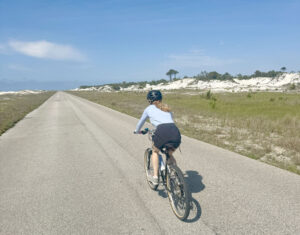 Live music was tuning up at the High Five Dive Bar – great name – it feels like a garage barn with a hilarious vibe and cheap drinks.
Live music was tuning up at the High Five Dive Bar – great name – it feels like a garage barn with a hilarious vibe and cheap drinks.
Next morning’s breakfast, locals steered us to Apalachicola Chocolate and Coffee Company on Market, and it was bustling with happy town folk. They roast their own coffee beans in the shop, and bake yummy breakfast pastries. The perfect bite before our bike trip.
Barrier Island Biking – Crossing two expansive bridges (12 miles, 15 minutes, 10 miles of bridge), we reached St. George Island. This beautiful barrier isle is 28 miles long, just a mile wide at best, surrounded by wild dunes and soft white sand. We parked by the Lighthouse and rode 4 miles on a paved bike lane into St George Island State Park, and another 6 miles on paved bike-friendly roads in the Park. We see why St George Island is often awarded “best beach in America” by Dr Beach. Miles of talcum silver sand wraps the remote island, much of which is uninhabited thanks to miles of State Park on the Island’s east end and a large Reserve on the west end, with an exclusively gated private community (St George Plantation). Marking the center of the Island is the iconic 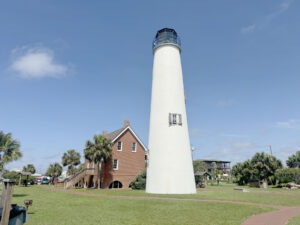 1833 Cape St. George Island Lighthouse, which was closed for climbing on our Thursday visit. Aside from a plethora of touristy beach shops, St George is pristine with no high rises that spoil the landscape of so many Florida beaches. Kayak and boat tours from St George are available, another fun way to explore. Scroll down for Photos of St George Island Biking and Lighthouse
1833 Cape St. George Island Lighthouse, which was closed for climbing on our Thursday visit. Aside from a plethora of touristy beach shops, St George is pristine with no high rises that spoil the landscape of so many Florida beaches. Kayak and boat tours from St George are available, another fun way to explore. Scroll down for Photos of St George Island Biking and Lighthouse
Paddy’s Raw Bar or the Blue Parrot Ocean Front Cafe are the two places to eat on St George Island. We sat at the open-air bar at Paddy’s Raw Bar by the bay, listening to music and banter from the friendly bartender Robin and her regular patrons.
A Swamp Tour seemed apropos in Apalach. So we met Captain Cook, a big Florida dude, at the City Docks for an Apalachicola Airboat Excursion. Captain had us laughing from the get-go, and soon we were flying through marsh, zipping around the bay, and plying serene inlets of untouched surprisingly gorgeous lush swamp. It wasn’t long into one of his local stories that an alligator swam up to our boat, then another. Captain Cook told firsthand tales of his family’s generations of fishing and hunting while simultaneously respecting their environs here – fascinating, funny and fun. This vast waterbody is the 2nd largest seafood-producing estuary in the world, covering over 250,000 acres!
Apalachicola travel tips continue below Airboat Swamp Tour Photo Gallery
Dinner that night, again following local Apalach tips, we scored a perfect riverfront table at Half Shell Dockside just as the live music was starting. We feasted on more great seafood, watching boats return to the dock. The gentle rustle of marsh life, and the slow flow of the river was relaxing, poetic even.
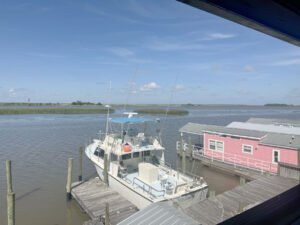 Departing Apalachicola, we vowed to return to this delightful Florida town of 2,500 friendly folk. Perhaps for Apalach Oyster Cookoff in January, or the famous Florida Seafood Festival in November. Next time we’ll kayak, and visit Apalachicola National Park – the largest national forest in Florida, covering about 574,000 acres, since 1934. And we’ll check out more beloved dining spots like The Station – a converted gas station turned restaurant, Up The Creek, and Up To No Good Grill.
Departing Apalachicola, we vowed to return to this delightful Florida town of 2,500 friendly folk. Perhaps for Apalach Oyster Cookoff in January, or the famous Florida Seafood Festival in November. Next time we’ll kayak, and visit Apalachicola National Park – the largest national forest in Florida, covering about 574,000 acres, since 1934. And we’ll check out more beloved dining spots like The Station – a converted gas station turned restaurant, Up The Creek, and Up To No Good Grill.
Our Panhandle tour continued west to Mexico Beach – rebuilt since Hurricane Michael (not so tastefully we’d add), and the military Tyndall Air Force Base, through busy Panama City – crossing into the Central Time Zone. We stopped for lunch at LaCrema in the Disney-esque contrived beach community of Rosemary Beach, designed in the 1990’s to resemble a European riviera resort town. Then we passed through Alys Beach, and Watercolor (home to the Truman Show movie set with its cookie-cutter homes with white picket fences), to Destin and the huge resort compound of Sandestin, on our way to Mobile, Alabama and New Orleans, Louisiana.
We both commented that Apalachicola had the most pleasant genuine vibe. Apalachicola means “on the other side” referencing the natives on the other side of the river, today it symbolizes the “the friendly people over there.”
Fun fact: Apalachans call their place The Forgotten Coast because the rest of Panhandle cities to the west promoted themselves as The Panhandle some years ago neglecting to mention this entire coastal section. Locals here were salty so Apalachicola trademarked “The Forgotten Coast” – which now sounds even more inviting!
Apalach Tips:
Coming by boat, stay at the Apalachicola City Docks, check in with the Harbormaster who is also the Chief of Police.
To stay waterfront, The Water Street Hotel and Marina is an average hotel, with spacious suites overlooking a small marina with transient slips, and a swimming pool not facing the water. But the management and staff here is not polished or friendly like the Gibson Inn, even though rooms are riverfront and spacious.
Thanks to The Apalachicola Bay Chamber of Commerce for fun things to do suggestions!
See more Florida Reviews:
Amelia Island- Fernandina l Anna Maria Island l Apalachicola – Florida’s Forgotten Coast l Boynton Beach l Crystal River l Delray Beach l Disney World Orlando l Fort Lauderdale l Key West l Kennedy Space Center l Miami l Mount Dora l Marathon l St Augustine l Sarasota, Siesta Key and Venice l Winter Park
